Creating and Maintaining an Organic Orchard
Welcome to the world of organic orchards, where nature's bounty meets sustainable practices! Establishing and nurturing a thriving organic orchard is not just about planting trees; it’s about creating a harmonious ecosystem that flourishes over time. Imagine stepping into a vibrant landscape filled with the sweet scent of ripening fruit, the sound of buzzing bees, and the sight of lush greenery all around you. Sounds idyllic, right? Well, it can be your reality with the right steps and strategies!
In this article, we’ll explore the essential components of creating and maintaining an organic orchard, focusing on sustainable practices, effective pest management, and soil health to ensure fruitful yields. We'll dive into everything from choosing the right location to marketing your organic produce. So, whether you’re a seasoned gardener or a newbie looking to dig your hands into some earth, this guide is tailored just for you!
First off, let’s talk about the importance of location. Selecting the right site for your orchard is crucial. You wouldn’t want to plant your beloved apple trees in a shady spot, would you? Factors like sunlight exposure, drainage capabilities, and soil quality play a significant role in determining the growth and productivity of your organic fruit trees. Ideally, aim for a location that gets at least six to eight hours of sunlight daily, as this will help your trees thrive and produce delicious fruit.
Next, we have to consider soil preparation and health. Healthy soil is the foundation of a successful orchard. Think of it as the bedrock of your garden dreams! Understanding soil composition, pH levels, and organic amendments can enhance nutrient availability and promote robust tree growth. Regular soil testing is a must; it helps identify nutrient deficiencies and pH imbalances. This knowledge allows for targeted amendments to optimize conditions for your fruit trees.
Speaking of amendments, utilizing organic materials like compost, manure, and cover crops can enrich your soil. These amendments improve soil structure, enhance microbial activity, and provide essential nutrients for tree health. Just like a balanced diet is crucial for our well-being, the same goes for your soil! The richer the soil, the healthier your trees will be.
Choosing the right fruit varieties is another vital aspect of your orchard's success. It’s not just about picking your favorites; you need to consider climate, disease resistance, and market demand. Every fruit variety has specific climate requirements, so understanding your local climate helps in selecting varieties that will flourish and produce high-quality fruit. For example, if you live in a warmer region, varieties like peaches and figs might thrive, while cooler climates may be better suited for apples and pears.
Let’s not forget about pest management strategies. Effective pest management is essential for maintaining an organic orchard. Implementing integrated pest management (IPM) techniques can help control pests while minimizing harm to beneficial organisms. Encouraging beneficial insects, such as ladybugs and lacewings, can naturally control pest populations. By creating habitats for these insects, you enhance biodiversity and promote a balanced ecosystem in your orchard.
When it comes to watering and irrigation techniques, proper practices are crucial for tree health and fruit production. Understanding the water needs of your orchard and implementing efficient irrigation systems can optimize growth. For instance, drip irrigation delivers water directly to the roots, reducing water waste and promoting deep root growth. This method is particularly effective in maintaining soil moisture levels in organic orchards.
Finally, let’s talk about harvesting and post-harvest care. Knowing when to harvest is key to ensuring optimal flavor and texture. Each fruit variety has specific indicators of ripeness that should be closely monitored. Proper storage techniques can prolong the freshness of harvested fruit. Implementing cool storage conditions and appropriate packaging helps maintain quality until the fruit reaches consumers.
In conclusion, creating and maintaining an organic orchard is a rewarding journey that requires attention to detail, patience, and a love for nature. By following the steps outlined in this article, you can cultivate a thriving orchard that not only provides delicious fruit but also contributes to a healthier planet. So grab your gardening gloves, and let’s get started on this exciting adventure!
- What is the best time to plant fruit trees? Generally, early spring or late fall is the best time to plant fruit trees, as it allows them to establish roots before the heat of summer or the cold of winter.
- How often should I water my orchard? Watering depends on the climate and soil type. Generally, young trees need more frequent watering, while established trees can be watered less often but deeply.
- What are some common pests that affect organic orchards? Common pests include aphids, spider mites, and fruit flies. Implementing IPM strategies can help manage these pests effectively.
- How can I market my organic produce? Building a strong brand and participating in local farmers' markets are excellent ways to market your organic produce and connect with consumers directly.
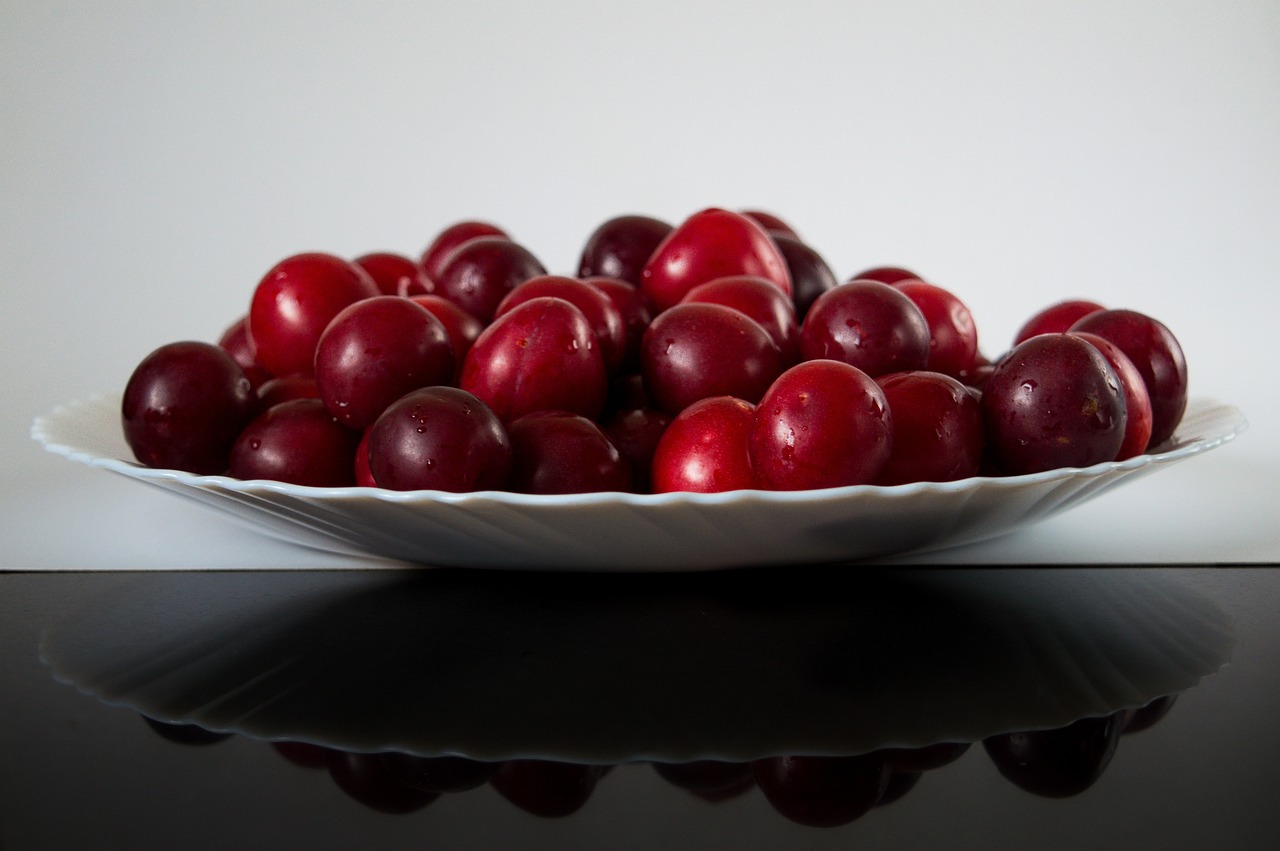
Choosing the Right Location
When it comes to creating a thriving organic orchard, one of the most critical decisions you'll make is . Think of it as laying the foundation for a house; if the foundation is weak, no matter how beautiful the house is, it will never stand tall. Similarly, the success of your orchard hinges on several factors including sunlight, drainage, and soil quality. Each of these components plays a vital role in the growth and productivity of your fruit trees.
First and foremost, let’s talk about sunlight. Most fruit trees require at least six to eight hours of direct sunlight each day. Imagine trying to grow a sun-loving plant in the shade; it simply won’t thrive! Therefore, scouting for a spot that receives ample sunlight is crucial. If your chosen area has tall trees or buildings nearby, consider how they might block the sun at different times of the year.
Next up is drainage. Poor drainage can lead to waterlogged soil, which is a death sentence for many fruit trees. To assess drainage, you can conduct a simple test: dig a hole about 12 inches deep and fill it with water. If the water drains away within a few hours, you’re in good shape! However, if it takes longer, you might want to rethink your location or consider implementing drainage solutions.
Then, we have soil quality. The health of your soil directly impacts the health of your trees. Rich, loamy soil is often ideal, but that’s not always the case. You may find clay or sandy soils in your area. Each type has its pros and cons, but the key is to understand what you’re working with. A quick soil test can reveal its composition and pH level, allowing you to make informed decisions about amendments.
Here’s a quick overview of factors to consider when choosing your orchard location:
- Sunlight: Ensure at least 6-8 hours of direct sunlight daily.
- Drainage: Check for good drainage to prevent waterlogging.
- Soil Quality: Test soil for composition and pH levels.
- Wind Protection: Consider natural windbreaks to protect young trees.
Lastly, don’t overlook the importance of wind protection. Young trees can be particularly vulnerable to strong winds, which can damage branches and hinder growth. Look for natural windbreaks, such as existing trees or shrubs, that can provide a buffer. If your site is exposed, you might even consider planting a row of hardy shrubs to act as a wind barrier.
In summary, selecting the right location for your organic orchard is not just about picking a pretty spot; it's about understanding the fundamental needs of your fruit trees. By considering factors like sunlight, drainage, soil quality, and wind protection, you set the stage for a flourishing orchard that yields delicious, organic fruit for years to come. Now, who wouldn’t want that?
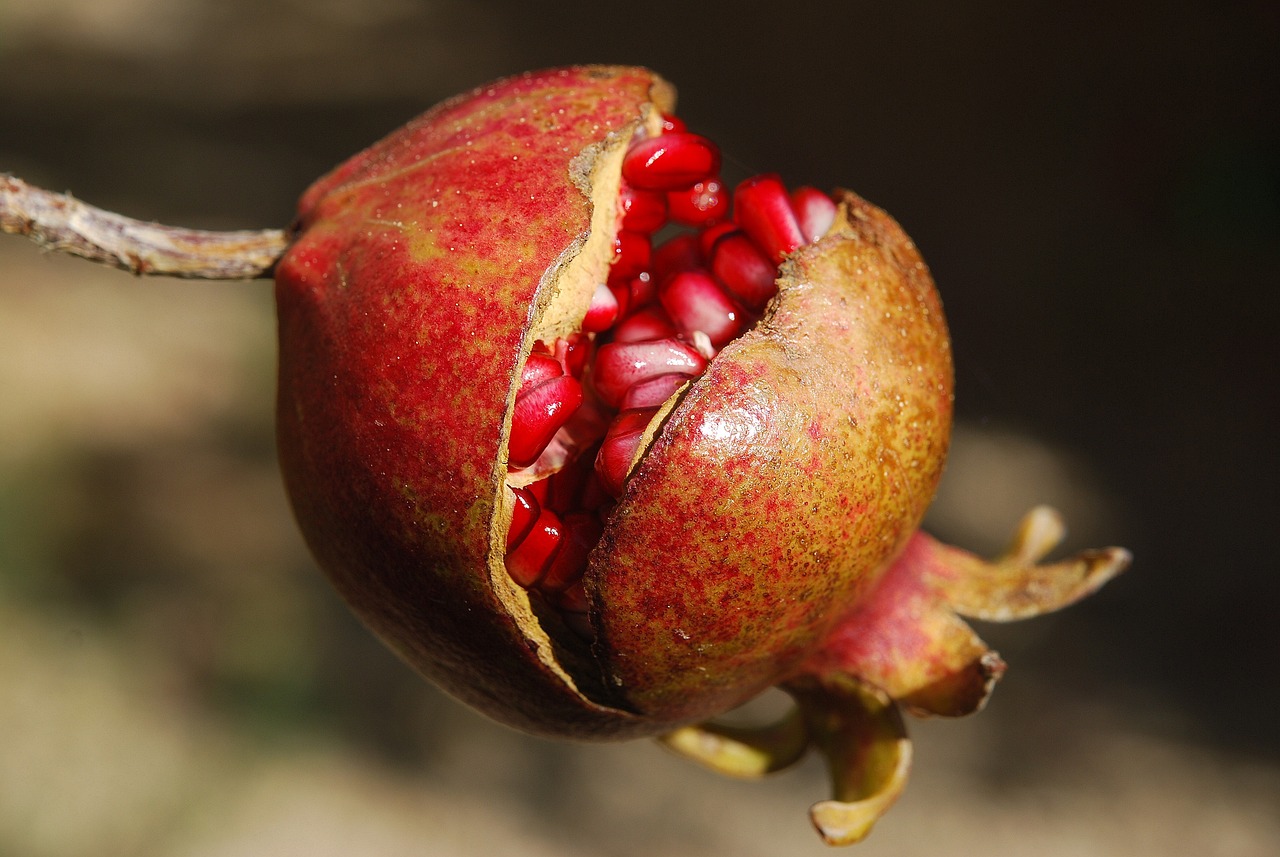
Soil Preparation and Health
Healthy soil is the foundation of a successful orchard. Think of it as the bedrock of your fruit trees’ existence; without it, they simply cannot thrive. When preparing your soil, it's essential to understand its composition, pH levels, and the benefits of organic amendments. This knowledge not only enhances nutrient availability but also promotes robust tree growth. Imagine trying to build a house on a shaky foundation—your orchard is no different. A well-prepared soil will lead to fruitful harvests, while poor soil can result in stunted growth and disease.
One of the first steps in ensuring soil health is testing the soil quality. Regular soil testing helps you identify any nutrient deficiencies and pH imbalances. This knowledge is like having a roadmap; it allows you to make targeted amendments to optimize conditions for your fruit trees. You can easily find soil testing kits at garden centers or online, and many local agricultural extensions offer testing services. Typically, a good soil test will provide you with information on:
| Nutrient | Optimal Range | Current Level |
|---|---|---|
| Nitrogen (N) | 10-20 mg/kg | 15 mg/kg |
| Phosphorus (P) | 5-10 mg/kg | 8 mg/kg |
| Potassium (K) | 100-200 mg/kg | 150 mg/kg |
| pH Level | 6.0-7.0 | 6.5 |
Once you have a clear understanding of your soil's composition, you can start implementing organic soil amendments. Utilizing organic materials like compost, manure, and cover crops enriches the soil and improves its structure. These amendments enhance microbial activity and provide essential nutrients for tree health. For instance, adding compost increases the organic matter in the soil, which helps retain moisture and nutrients. This is especially important in organic orchards, where chemical fertilizers are not an option.
Another beneficial practice is the use of cover crops during the off-season. Cover crops like clover or vetch can fix nitrogen in the soil, suppress weeds, and prevent erosion. They act like a protective blanket, keeping the soil healthy and ready for the next planting season. When it comes to maintaining soil health, remember that balance is key. Too much of one amendment can throw off the delicate ecosystem that supports your trees.
In summary, the journey to creating a thriving organic orchard begins with understanding and preparing your soil. Regular testing and the right organic amendments will set the stage for healthy, productive fruit trees. Just like a gardener tends to their plants with love and care, nurturing your soil will lead to bountiful harvests and a flourishing orchard.
- How often should I test my soil? - It's recommended to test your soil at least once a year, preferably before planting season.
- What are the best organic amendments for soil? - Compost, well-rotted manure, and cover crops are excellent organic amendments.
- Can I use chemical fertilizers in an organic orchard? - No, organic orchards should avoid synthetic fertilizers to maintain organic certification.
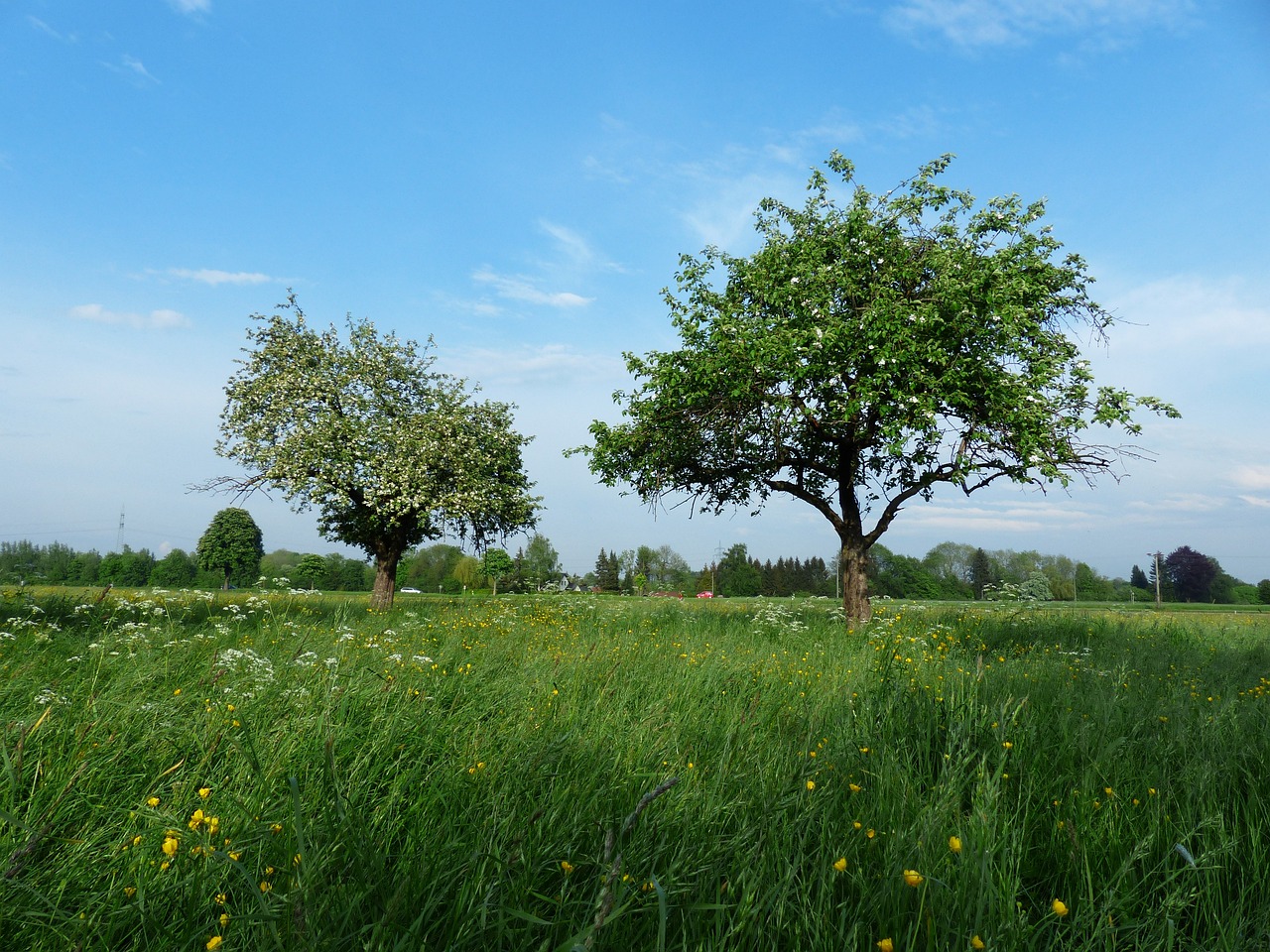
Testing Soil Quality
When it comes to establishing a thriving organic orchard, is not just a good idea; it’s absolutely essential. Think of your soil as the foundation of a house. If the foundation is weak, everything built on top of it is at risk. Regular soil testing helps you understand the nutrient composition, pH levels, and overall health of your soil, which directly impacts the growth and productivity of your fruit trees. By knowing exactly what your soil needs, you can make informed decisions about amendments and care.
To get started, you’ll want to collect soil samples from various spots in your orchard. This ensures you get a representative sample of the overall soil quality. Here’s a simple process to follow:
- Choose Sampling Locations: Select multiple spots throughout your orchard to sample. Aim for at least 5-10 different locations to get a comprehensive view.
- Collect Samples: Use a clean spade or soil probe to dig down about 6-8 inches, and take a small amount of soil from each location.
- Mix and Prepare: Combine the samples in a clean bucket and mix them thoroughly. Remove any debris like roots or rocks.
- Send for Testing: Choose a reputable soil testing laboratory and send in your mixed sample. Most labs will provide you with a detailed report on nutrient levels and pH.
Once you receive your soil test results, you’ll likely see a breakdown of key nutrients such as nitrogen, phosphorus, potassium, and micronutrients. Additionally, the report will indicate the pH level of your soil. Understanding these results is crucial, as different fruit trees thrive in different pH ranges. For instance, most fruit trees prefer a pH between 6.0 and 7.0. If your soil is too acidic or alkaline, it can hinder nutrient absorption, leading to poor tree health and reduced yields.
Based on the test results, you may need to consider organic soil amendments to address any deficiencies. Common amendments include:
- Compost: Rich in nutrients, compost improves soil structure and encourages microbial activity.
- Bone Meal: A great source of phosphorus, bone meal promotes strong root development.
- Kelp Meal: Packed with micronutrients, kelp meal enhances overall plant health.
In conclusion, regularly testing your soil quality is a proactive step that sets the stage for a successful organic orchard. By understanding the needs of your soil, you can create an environment where your trees can thrive, ultimately leading to a bountiful harvest. Remember, a healthy orchard starts from the ground up!
Q: How often should I test my soil?
A: It's recommended to test your soil every 2-3 years, or more frequently if you notice any issues with tree health.
Q: Can I test my soil at home?
A: Yes, there are home soil testing kits available, but for the most accurate results, sending samples to a professional lab is advisable.
Q: What should I do if my soil is too acidic?
A: You can add lime to your soil to raise the pH level and make it less acidic.
Q: Is soil testing necessary for established orchards?
A: Yes, even established orchards can benefit from soil testing to ensure ongoing health and productivity.
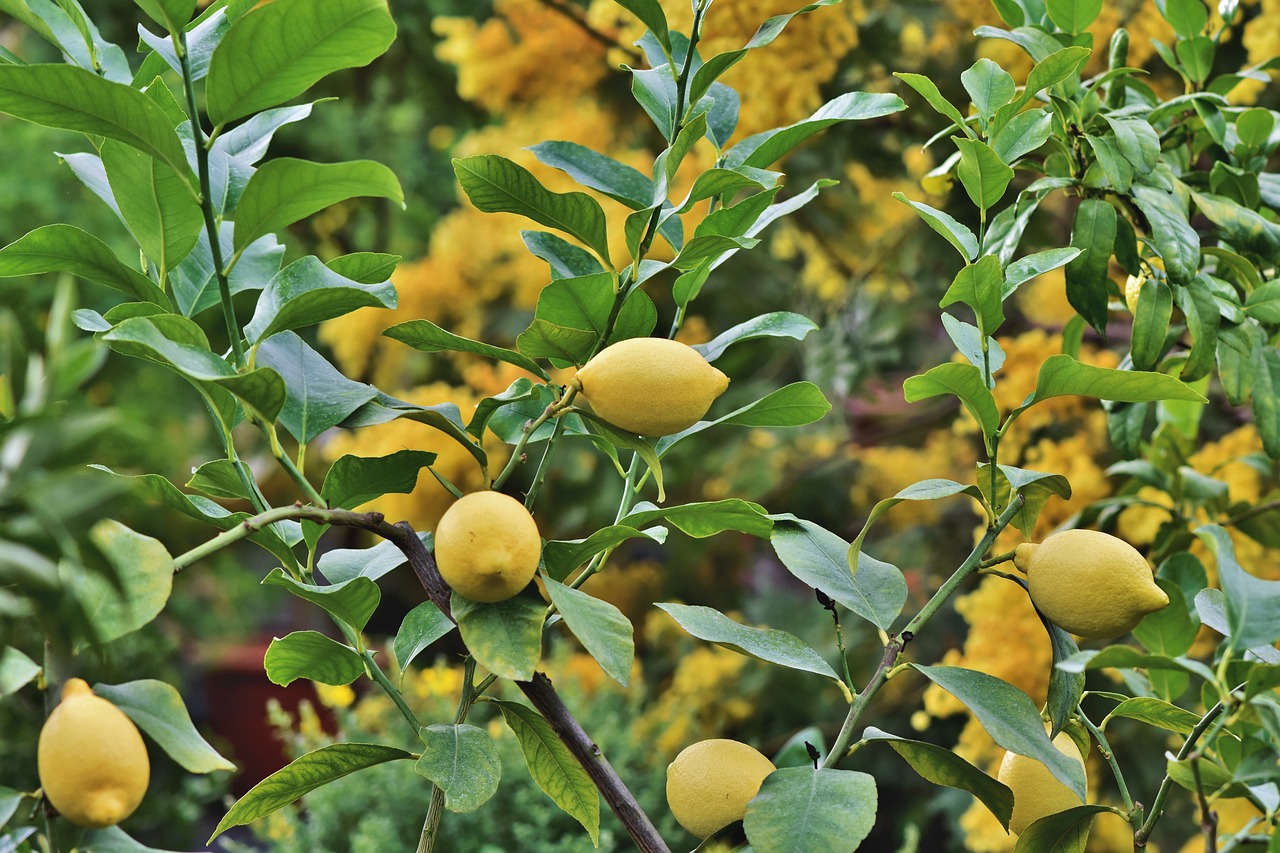
Organic Soil Amendments
When it comes to nurturing a thriving organic orchard, soil health is paramount. One of the most effective ways to enhance soil quality is through the use of . These amendments not only improve the structure of the soil but also boost its nutrient content, which is essential for the robust growth of your fruit trees. Think of soil amendments as a multivitamin for your orchard—providing the essential nutrients that trees need to flourish.
Organic soil amendments can come in various forms, such as compost, manure, and cover crops. Each type has its unique benefits:
- Compost: This is decomposed organic matter that enriches the soil with nutrients and improves its structure. Compost enhances microbial activity, which is crucial for nutrient cycling.
- Manure: Animal manure is a rich source of nitrogen, phosphorus, and potassium. When properly aged or composted, it can be a fantastic amendment that feeds your trees while also improving soil texture.
- Cover Crops: Planting cover crops, like clover or vetch, during the off-season can add organic matter to the soil. These crops not only prevent erosion but also fix nitrogen in the soil, making it available for your fruit trees.
Incorporating these organic amendments into your soil can lead to improved moisture retention, enhanced drainage, and increased nutrient availability. Imagine your soil as a sponge—when it's rich in organic matter, it holds onto water and nutrients much better, making them accessible to your trees when they need them most.
It's also important to note that the timing of applying these amendments can significantly affect their efficacy. For instance, adding compost in the spring can provide a nutrient boost just as your trees are gearing up for the growing season. On the other hand, incorporating manure in the fall allows it to break down and enrich the soil over the winter months.
In summary, utilizing organic soil amendments is a vital step in creating a sustainable and productive orchard. By focusing on enriching your soil with these natural materials, you’re not just investing in the health of your trees but also in the quality of the fruit they produce. As you cultivate your orchard, remember that healthy soil leads to healthy trees, which ultimately leads to a bountiful harvest.
1. What are organic soil amendments?
Organic soil amendments are natural materials added to soil to improve its fertility, structure, and overall health. Common examples include compost, manure, and cover crops.
2. How often should I apply organic amendments to my orchard?
The frequency of application depends on the specific needs of your soil and trees. Generally, applying organic amendments annually or bi-annually is beneficial, especially before the growing season.
3. Can I use chemical fertilizers instead of organic amendments?
While chemical fertilizers can provide quick nutrients, they often do not improve soil structure or health in the long term. Organic amendments are recommended for sustainable practices and soil vitality.
4. How do I know if my soil needs amendments?
Regular soil testing can help identify nutrient deficiencies and pH imbalances. This information will guide you in deciding what organic amendments to apply and when.
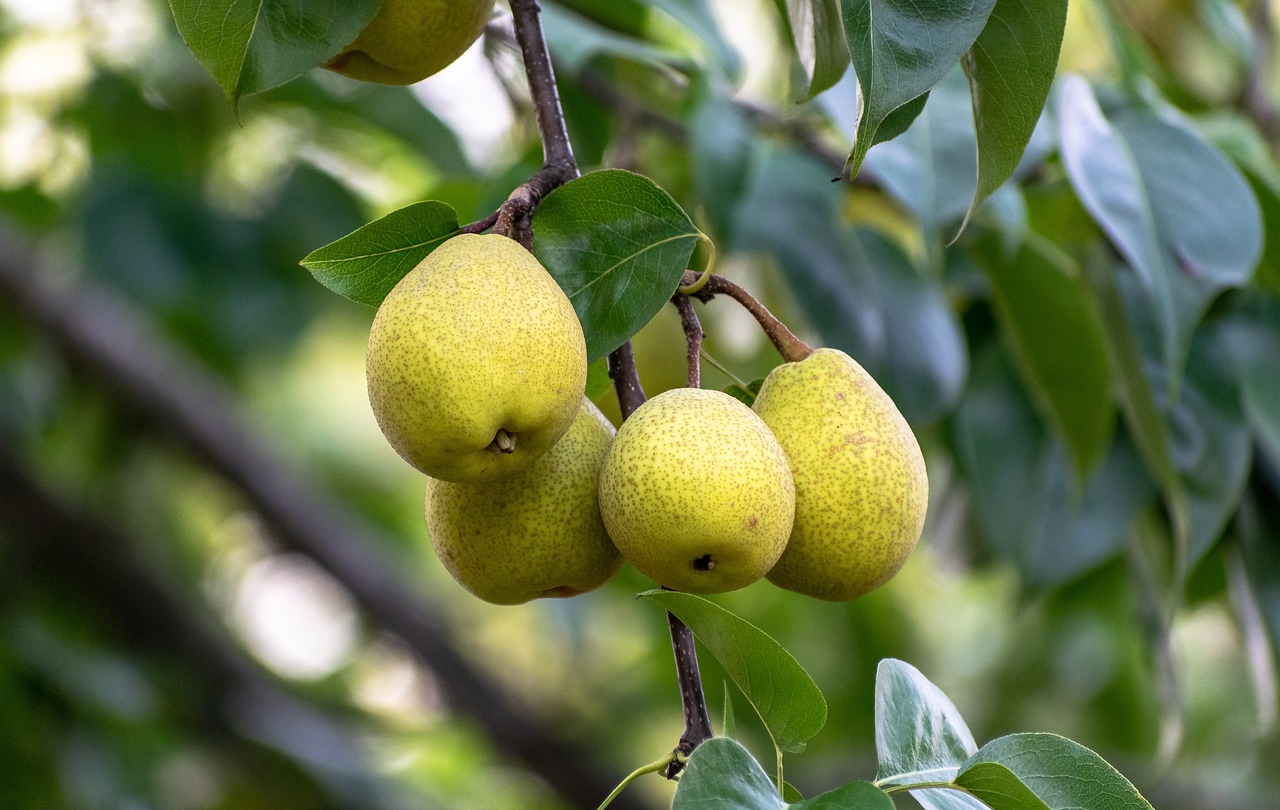
Selecting Fruit Varieties
Choosing the right fruit varieties is like picking the perfect ingredients for a delicious recipe; it sets the stage for success in your organic orchard. The journey begins with understanding your local climate, as each fruit variety has its own specific requirements for temperature, humidity, and sunlight. For instance, while apples thrive in cooler climates, citrus fruits prefer warmer environments. This means that if you live in a region with harsh winters, opting for varieties that can withstand the cold will be essential for a fruitful harvest.
Moreover, it's not just about the climate; you also need to consider disease resistance. Picking disease-resistant varieties can significantly reduce your reliance on chemical treatments, allowing for a more sustainable approach to orchard management. Imagine having a robust tree that can fend off pests and diseases naturally; it’s like having a superhero in your garden! Some popular disease-resistant varieties include:
| Fruit Type | Variety | Disease Resistance |
|---|---|---|
| Apple | Liberty | Cedar Apple Rust, Scab |
| Pear | Moonglow | Fire Blight |
| Peach | Contender | Peach Leaf Curl |
In addition to climate and disease resistance, market demand plays a crucial role in your selection process. If you plan to sell your produce, it’s wise to choose varieties that are popular among consumers. Think about what fruits are trending or what local markets are asking for. For example, heirloom varieties may be in high demand for their unique flavors and colors, while conventional varieties might appeal to a broader audience. Balancing personal preference with market trends can help you cultivate a successful orchard.
Finally, consider the growth habits of the trees you select. Some fruit trees grow tall and require more space, while others are more compact and can fit into smaller areas. This is especially important if you have limited space or are working with a smaller plot of land. Understanding the growth habits will not only help you plan your orchard layout but also ensure that each tree has enough room to thrive without competing for resources.
In conclusion, selecting fruit varieties involves a careful balance of climate compatibility, disease resistance, market demand, and growth habits. By taking the time to research and choose wisely, you’ll set your organic orchard up for a bountiful harvest that can be enjoyed for years to come.
- What is the best fruit tree to plant in a cold climate?
Apple trees, particularly cold-hardy varieties, are excellent choices for colder regions. - How can I determine if a fruit variety is disease-resistant?
Researching local extension services and agricultural universities can provide valuable information on disease-resistant varieties. - What factors should I consider when choosing fruit trees for a small space?
Look for dwarf or semi-dwarf varieties that will fit well in your limited space while still producing a good yield.
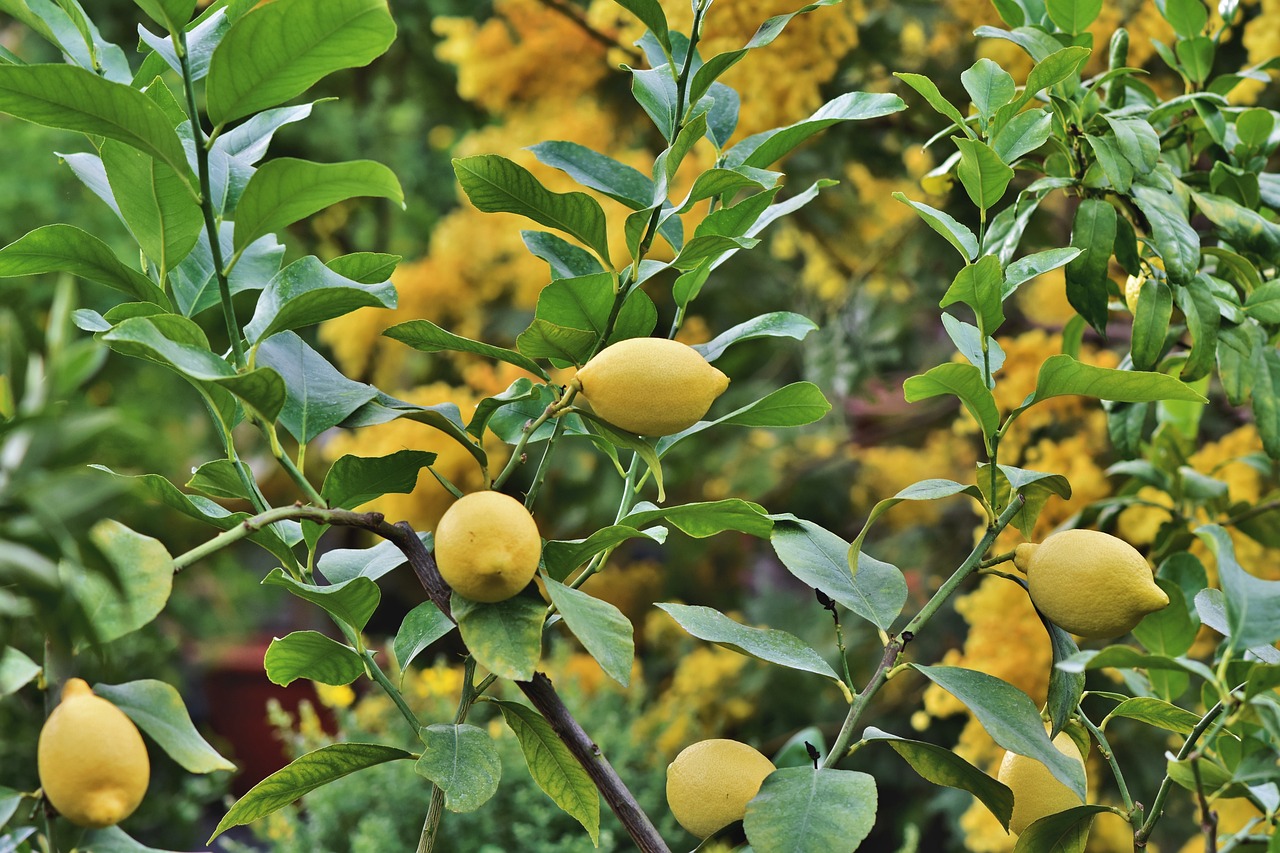
Understanding Local Climate
When it comes to creating a thriving organic orchard, one of the most critical factors to consider is your local climate. Just like a fish needs water to thrive, your fruit trees need the right climate conditions to flourish. The climate in your area will dictate which fruit varieties will not only survive but also yield the best harvests. So, how do you figure out what your trees will love?
First off, take a good look at the temperature ranges in your region. Different fruits have varying temperature requirements. For example, apples generally prefer cooler climates, while peaches thrive in warmer conditions. Understanding your local temperature patterns can help you select the right species. You might even want to create a simple table to keep track:
| Fruit Variety | Temperature Preference | Best Growing Zones |
|---|---|---|
| Apples | Cool Temperatures (60-75°F) | Zones 3-8 |
| Peaches | Warm Temperatures (70-90°F) | Zones 6-9 |
| Citrus | Warm Temperatures (65-85°F) | Zones 9-11 |
Next, consider the amount of sunlight your orchard will receive. Most fruit trees require at least six hours of direct sunlight daily to produce fruit. If your area is prone to overcast skies or heavy rainfall, you might need to think about varieties that can handle less sun. A quick tip is to observe how sunlight moves across your property throughout the day. This can help you identify the best spots for planting.
Lastly, don't forget about precipitation and humidity levels. Some fruits, like blueberries, thrive in more humid conditions, while others, like grapes, prefer drier weather. Understanding the average rainfall in your area can guide your irrigation practices and help you choose the right fruit varieties. If your region experiences long dry spells, you’ll want to ensure you have a solid watering plan in place.
In summary, understanding your local climate is essential for selecting the right fruit trees for your organic orchard. By considering temperature, sunlight, and precipitation, you can create an environment where your trees can thrive and produce bountiful harvests. Remember, the more you know about your local climate, the better equipped you'll be to make informed decisions that lead to a successful organic orchard!
- What is the best climate for an organic orchard? The best climate depends on the fruit varieties you wish to grow. Research the specific needs of each variety to determine suitability.
- How do I know if my soil is suitable for an orchard? Conducting a soil test can provide insights into pH levels and nutrient content, helping you understand if amendments are needed.
- Can I grow multiple fruit varieties in one orchard? Yes, but ensure that their climate and soil requirements align to promote healthy growth.
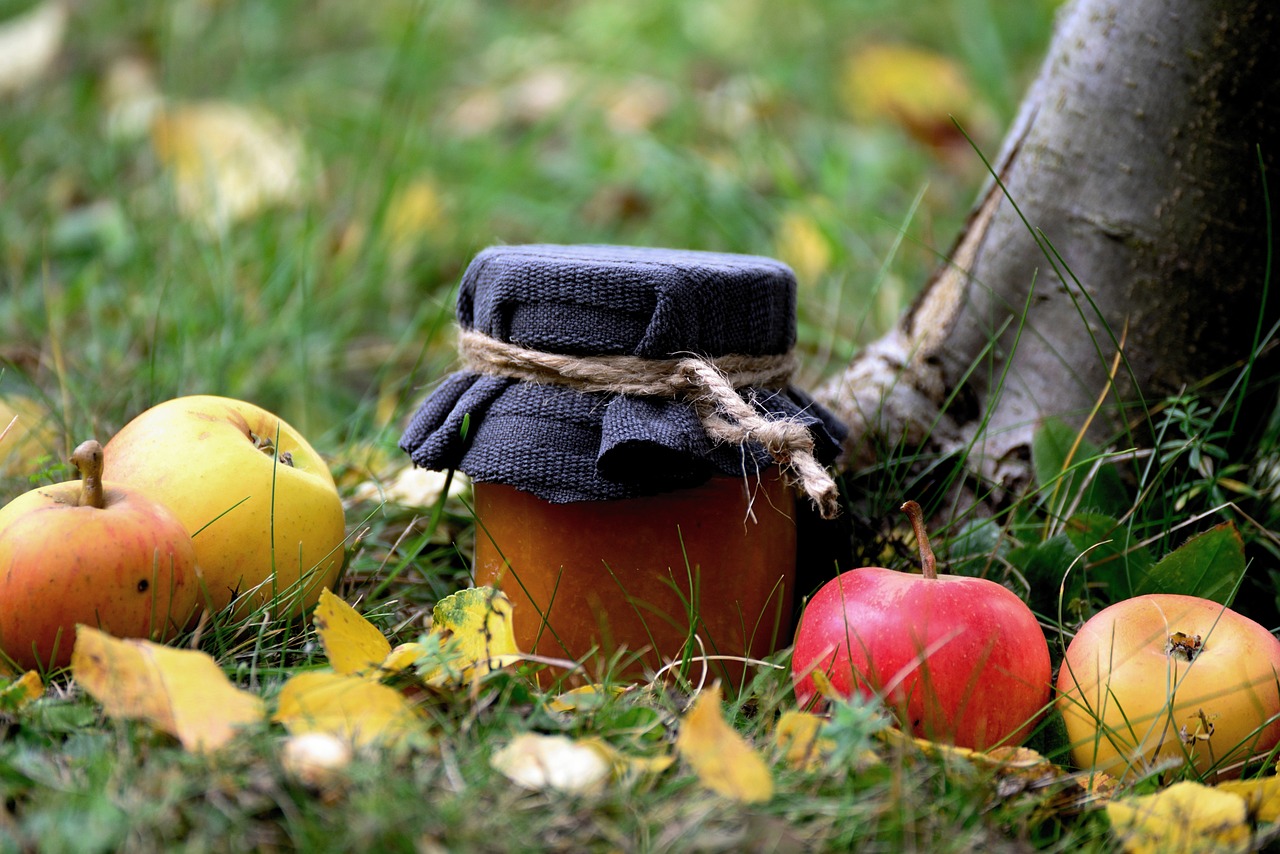
Disease-Resistant Varieties
When it comes to establishing a thriving organic orchard, one of the smartest moves you can make is to choose of fruit trees. Not only do these varieties help in minimizing the need for chemical treatments, but they also create a more resilient ecosystem within your orchard. Imagine planting a tree that stands strong against diseases, much like a knight in shining armor protecting a castle. This approach not only safeguards your investment but also promotes a healthier environment for all the plants and creatures that call your orchard home.
So, what exactly are disease-resistant varieties? These are specific cultivars that have been bred or selected for their ability to withstand certain diseases that commonly affect fruit trees. By opting for these varieties, you are essentially choosing to invest in trees that require less maintenance and are more likely to yield a bountiful harvest. For example, apple trees that are resistant to scab or peach trees that can fend off bacterial spot are great choices. They not only save you time and effort but also reduce the overall stress on your orchard.
Here’s a quick overview of some popular disease-resistant fruit varieties:
| Fruit Type | Disease Resistance | Example Varieties |
|---|---|---|
| Apple | Scab, Fire Blight | Liberty, Enterprise |
| Peach | Bacterial Spot | Flameprince, Contender |
| Pear | Fire Blight | Patten, Harrow Sweet |
| Cherry | Brown Rot | North Star, Surefire |
Incorporating these varieties into your orchard is like adding a safety net that catches you when you fall. They not only help in reducing the workload associated with pest and disease management but also enhance the overall health of your orchard. Additionally, planting a mix of disease-resistant varieties can further bolster your orchard’s defenses, creating a diverse ecosystem that benefits both your trees and the wildlife around them.
As you plan your orchard, consider reaching out to local agricultural extensions or nurseries that specialize in organic practices. They can provide invaluable insights into which disease-resistant varieties perform best in your specific climate and soil conditions. Remember, the goal is to create a vibrant, sustainable orchard that thrives naturally, and selecting the right varieties is a significant step in that direction.
- What are disease-resistant varieties? Disease-resistant varieties are specific cultivars of fruit trees that have been bred or selected for their ability to withstand certain diseases.
- Why should I choose disease-resistant varieties? Choosing disease-resistant varieties reduces the need for chemical treatments, promotes a healthier orchard ecosystem, and can lead to higher yields.
- How do I find disease-resistant varieties suitable for my area? Consult local agricultural extensions or nurseries that specialize in organic practices for recommendations based on your climate and soil conditions.
- Can I plant disease-resistant varieties alongside regular varieties? Yes, planting a mix can enhance biodiversity and create a more resilient orchard environment.
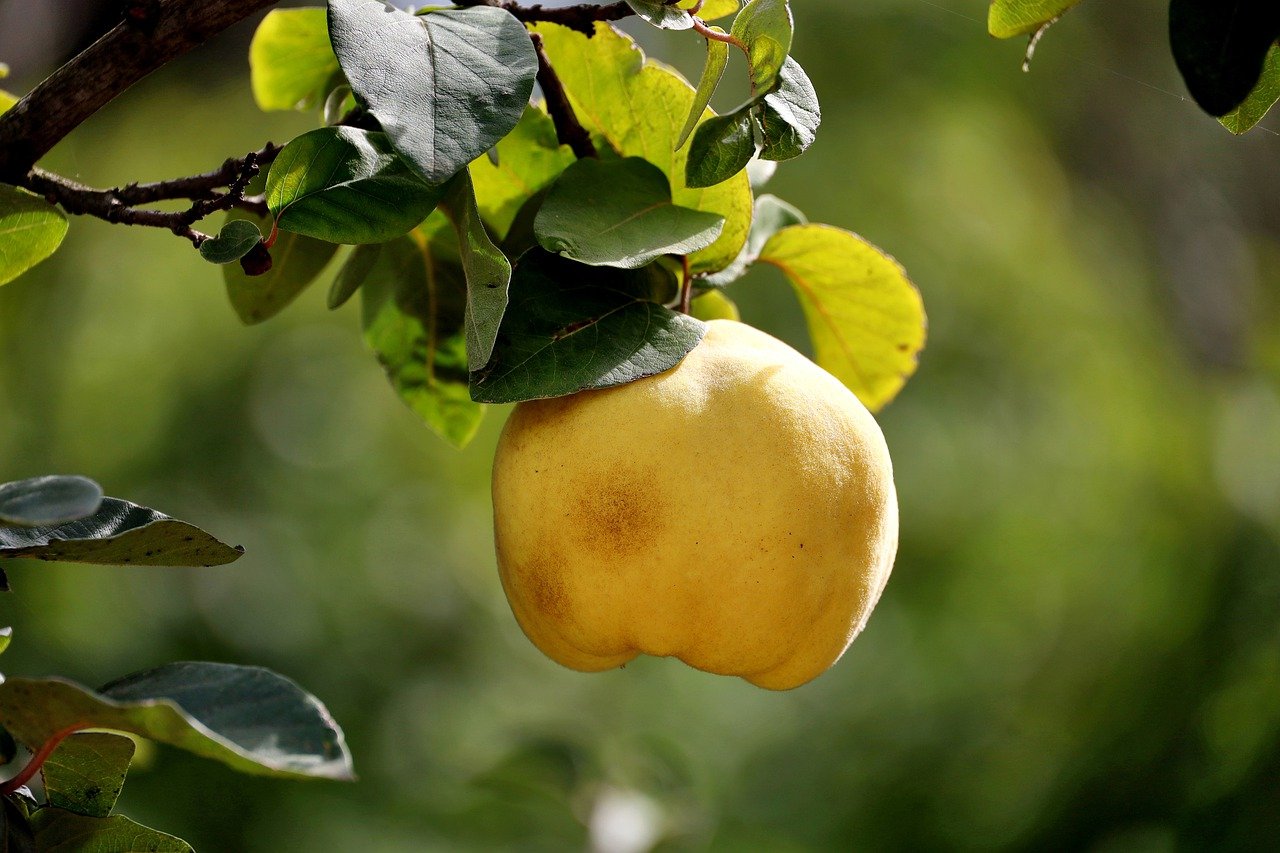
Pest Management Strategies
Managing pests in an organic orchard is not just a necessity; it's an art form that combines science, observation, and a touch of creativity. Effective pest management is essential for maintaining the health of your fruit trees and ensuring a bountiful harvest. One of the most effective approaches to pest management is the implementation of Integrated Pest Management (IPM) techniques. This holistic strategy emphasizes understanding the life cycles of pests and their natural enemies, allowing you to control pest populations while minimizing harm to beneficial organisms.
IPM is like a symphony; it requires different instruments to work together harmoniously. For instance, you might consider introducing beneficial insects into your orchard. These little allies, such as ladybugs and lacewings, are nature's pest control agents. By creating habitats for these insects, you can enhance biodiversity and promote a balanced ecosystem in your orchard. Imagine your orchard as a vibrant community where every member plays a role in keeping the environment healthy and thriving.
In addition to encouraging beneficial insects, utilizing organic pest control methods is crucial. Products like neem oil and insecticidal soaps can effectively manage pest infestations while adhering to organic standards. These methods ensure that your harvest remains safe for consumption, providing peace of mind to you and your customers. Think of these organic solutions as the gentle hand of a gardener, nurturing the plants while keeping unwanted pests at bay.
To illustrate the effectiveness of these strategies, consider the following table that outlines common pests, their natural predators, and organic control methods:
| Pest | Natural Predator | Organic Control Method |
|---|---|---|
| Aphids | Ladybugs | Neem oil spray |
| Spider Mites | Lacewings | Insecticidal soap |
| Whiteflies | Parasitic wasps | Sticky traps |
By understanding the relationships between pests and their natural enemies, you can create an environment where beneficial species thrive, reducing the need for chemical interventions. This approach not only promotes a healthier orchard ecosystem but also leads to a more sustainable farming practice.
Another key aspect of pest management is monitoring your orchard regularly. Keep your eyes peeled for any signs of pest activity, such as unusual leaf damage or the presence of insects. Early detection is crucial; it’s much easier to manage a small problem than to combat a full-blown infestation. Think of it as keeping an eye on a garden party; if you notice a few uninvited guests, it's best to address the situation before it gets out of hand!
In conclusion, effective pest management in your organic orchard involves a combination of encouraging beneficial insects, using organic control methods, and maintaining vigilant monitoring. By embracing these strategies, you can cultivate a thriving orchard that not only produces delicious fruit but also contributes to a healthier ecosystem.
- What is Integrated Pest Management (IPM)? IPM is a holistic approach to controlling pests that combines various strategies, including biological control, habitat manipulation, and the use of organic pesticides.
- How can I attract beneficial insects to my orchard? Planting a variety of flowers and creating habitats, such as insect hotels, can help attract beneficial insects.
- Are organic pest control methods effective? Yes, organic pest control methods can be very effective when used correctly and in conjunction with other pest management strategies.
- How often should I monitor my orchard for pests? Regular monitoring is essential; checking your orchard at least once a week can help you catch any issues early.
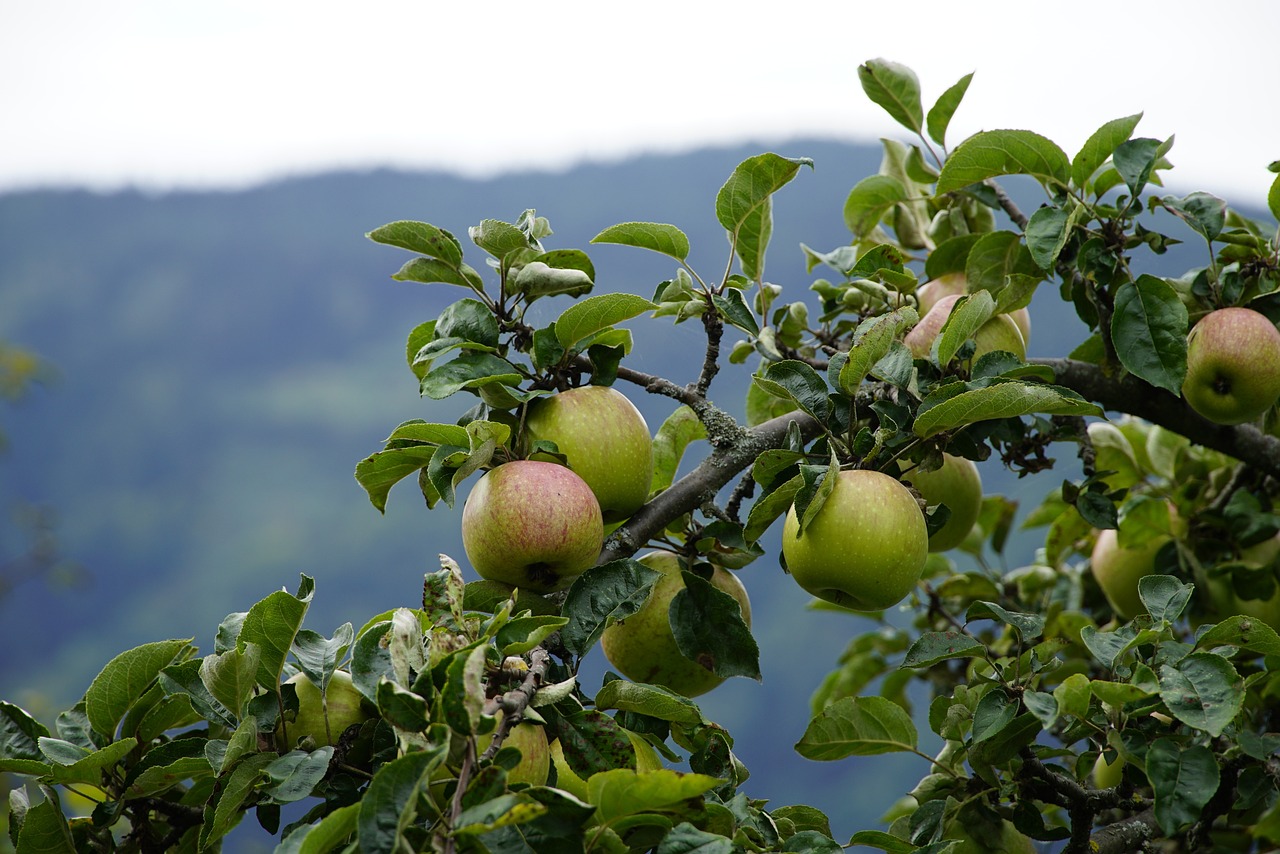
Beneficial Insects
When it comes to maintaining a thriving organic orchard, one of the most effective and environmentally friendly strategies is to embrace the power of . These tiny allies play a crucial role in pest management by naturally controlling pest populations, which can otherwise wreak havoc on your precious fruit trees. Think of them as nature's little soldiers, patrolling your orchard and keeping harmful invaders at bay. But how do you attract these beneficial bugs to your garden? Let's dive into the world of beneficial insects and learn how to create a welcoming environment for them.
First and foremost, it's essential to understand the types of beneficial insects that can help in your orchard. Some of the most effective include:
- Ladybugs: Known for their voracious appetite for aphids, these charming beetles can consume hundreds of pests in a single day.
- Lacewings: Often referred to as "aphid lions," lacewing larvae are another excellent predator of soft-bodied pests.
- Parasitic Wasps: These tiny wasps lay their eggs inside pest larvae, effectively controlling their populations without harming your trees.
Creating habitats that attract these beneficial insects is a vital step in enhancing your orchard's ecosystem. Here are some tips to encourage their presence:
- Plant Diversity: Incorporating a variety of flowering plants around your orchard can provide nectar and pollen, which are essential food sources for many beneficial insects.
- Provide Shelter: Leaving some areas of your orchard undisturbed, such as brush piles or native plants, offers shelter for beneficial insects to thrive.
- Avoid Pesticides: Steering clear of chemical pesticides is crucial, as these can harm beneficial insects along with the pests you aim to eliminate.
By fostering a balanced ecosystem in your orchard, you not only promote the health of your trees but also encourage a diverse range of wildlife. This biodiversity is essential for a resilient and sustainable orchard that can withstand the challenges of pests and diseases. Remember, a thriving orchard is one where nature's balance is respected and nurtured.
In conclusion, welcoming beneficial insects into your organic orchard is a win-win situation. Not only do they help control pest populations, but they also contribute to a healthier environment for your fruit trees to flourish. So, roll up your sleeves, get planting, and watch as your orchard transforms into a vibrant ecosystem teeming with life!
Q: What are beneficial insects?
A: Beneficial insects are species that provide natural pest control by preying on or parasitizing harmful pests in the garden or orchard.
Q: How can I attract beneficial insects to my orchard?
A: You can attract beneficial insects by planting a diverse range of flowering plants, providing shelter, and avoiding chemical pesticides.
Q: Are all insects beneficial for my orchard?
A: No, not all insects are beneficial. It's important to identify which insects are helpful and which are harmful to your plants.
Q: Can I use beneficial insects alongside organic pest control methods?
A: Absolutely! Beneficial insects can complement organic pest control methods, providing an additional layer of protection for your crops.
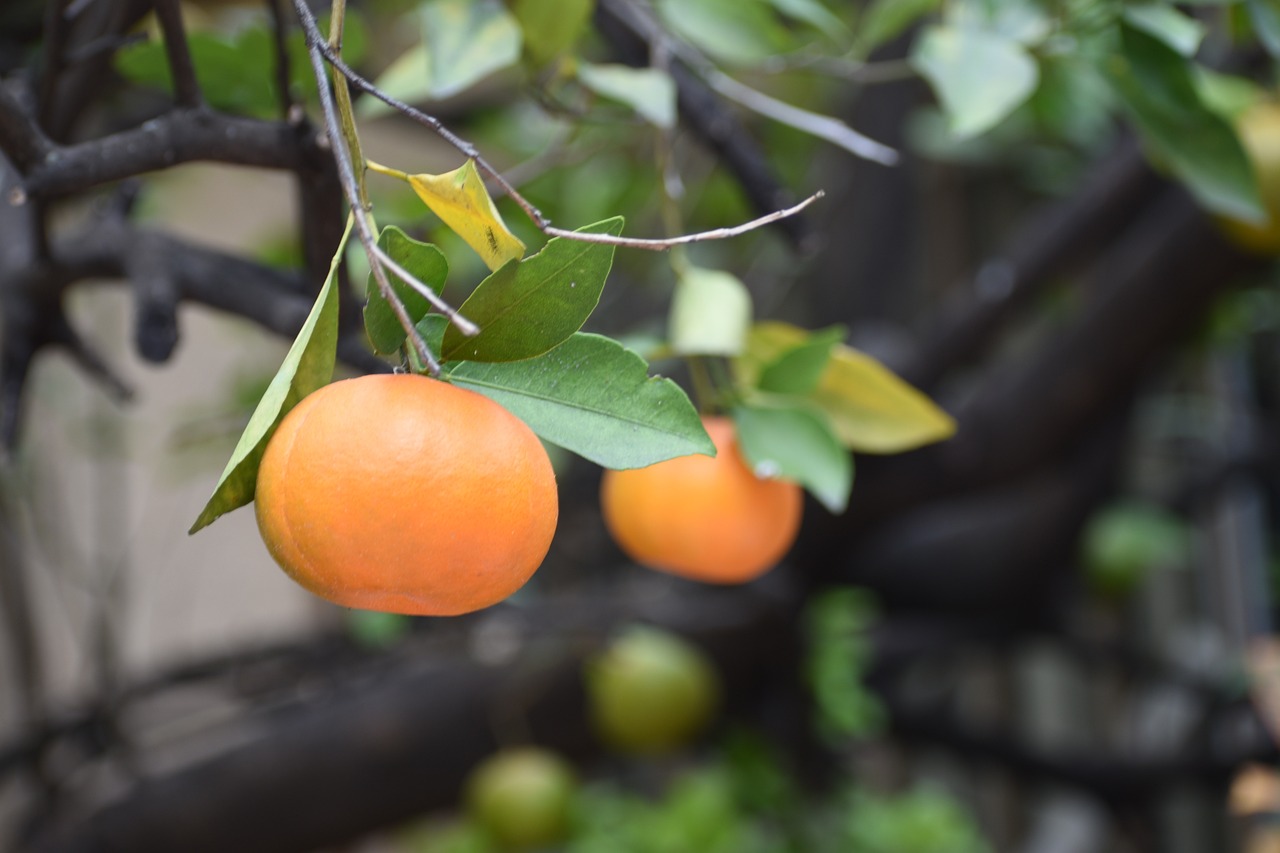
Organic Pest Control Methods
This article explores the essential steps and strategies for establishing and nurturing a thriving organic orchard, focusing on sustainable practices, pest management, and soil health to ensure fruitful yields.
Selecting an appropriate site for your orchard is crucial. Factors such as sunlight, drainage, and soil quality will significantly affect the growth and productivity of your organic fruit trees.
Healthy soil is the foundation of a successful orchard. Understanding soil composition, pH levels, and organic amendments can enhance nutrient availability and promote robust tree growth.
Regular soil testing helps identify nutrient deficiencies and pH imbalances. This knowledge allows for targeted amendments to optimize conditions for your fruit trees.
Utilizing organic materials like compost, manure, and cover crops enriches the soil. These amendments improve soil structure, enhance microbial activity, and provide essential nutrients for tree health.
Choosing the right fruit varieties is vital for your orchard's success. Consider climate, disease resistance, and market demand when selecting trees that will thrive in your environment.
Each fruit variety has specific climate requirements. Understanding your local climate helps in selecting varieties that will flourish and produce high-quality fruit.
Opting for disease-resistant fruit varieties minimizes the need for chemical interventions, promoting a healthier orchard ecosystem and reducing the risk of crop loss.
Effective pest management is essential for maintaining an organic orchard. Implementing integrated pest management (IPM) techniques can help control pests while minimizing harm to beneficial organisms.
Encouraging beneficial insects, such as ladybugs and lacewings, can naturally control pest populations. Creating habitats for these insects enhances biodiversity and promotes a balanced ecosystem in the orchard.
When it comes to maintaining a healthy organic orchard, are your best friends. These methods not only protect your crops but also safeguard the environment. There are various techniques you can employ to manage pests without resorting to harmful chemicals. For instance, using neem oil is a popular choice among organic farmers. Derived from the seeds of the neem tree, this natural pesticide disrupts the life cycle of pests, making it difficult for them to feed and reproduce.
Another method is the use of insecticidal soaps. These soaps are effective against soft-bodied insects such as aphids and spider mites. They work by suffocating the pests on contact, making them a quick and efficient solution. Additionally, you might consider introducing companion planting, where you plant certain crops together to naturally deter pests. For example, planting marigolds among your fruit trees can help repel nematodes and other harmful insects.
Here’s a quick rundown of some organic pest control methods:
- Neem Oil: Disrupts pest life cycles.
- Insecticidal Soaps: Suffocates soft-bodied insects.
- Companion Planting: Uses beneficial plants to deter pests.
Furthermore, employing physical barriers such as row covers can prevent pests from reaching your plants. These lightweight fabrics allow sunlight and moisture to penetrate while keeping unwanted critters out. Regular monitoring of your orchard is also crucial. By checking your trees frequently, you can catch pest problems early and take action before they escalate.
Proper watering practices are crucial for tree health and fruit production. Understanding the water needs of your orchard and implementing efficient irrigation systems can optimize growth.
Drip irrigation delivers water directly to the roots, reducing water waste and promoting deep root growth. This method is particularly effective in maintaining soil moisture levels in organic orchards.
Implementing rainwater harvesting systems can provide a sustainable water source for your orchard. Collecting and storing rainwater helps conserve resources and reduces reliance on municipal water supplies.
Pruning and training are essential practices for maintaining tree health and maximizing fruit production. Proper techniques promote airflow, light penetration, and shape the tree for optimal growth.
Understanding the best times to prune different fruit trees is crucial. Pruning at the right time encourages new growth and improves fruit quality while minimizing stress on the trees.
Training young trees helps establish a strong structure and encourages healthy growth. Techniques such as staking and thinning can guide tree development for better fruit production.
Harvesting at the right time and ensuring proper post-harvest care are vital for maintaining fruit quality. Understanding the signs of ripeness and storage methods can enhance shelf life.
Knowing when to harvest is key to ensuring optimal flavor and texture. Each fruit variety has specific indicators of ripeness that should be closely monitored.
Proper storage techniques can prolong the freshness of harvested fruit. Implementing cool storage conditions and appropriate packaging helps maintain quality until the fruit reaches consumers.
Effectively marketing your organic produce is essential for business success. Understanding your target market and employing diverse marketing strategies can enhance visibility and sales.
Creating a strong brand identity helps differentiate your organic produce in a competitive market. Highlighting your sustainable practices and quality can attract environmentally conscious consumers.
Participating in farmers' markets provides direct access to consumers, fostering community connections. This venue allows you to showcase your organic produce while gaining valuable customer feedback.
1. What are the benefits of organic pest control methods?
Organic pest control methods are safer for the environment, reduce chemical exposure for consumers, and promote biodiversity in your orchard.
2. How can I determine the right time to harvest my fruit?
Each fruit variety has specific signs of ripeness, such as color changes, firmness, and aroma. Monitoring these indicators will help you harvest at the optimal time.
3. Is drip irrigation better than traditional watering methods?
Yes, drip irrigation is more efficient as it delivers water directly to the roots, reducing waste and promoting healthy root growth.
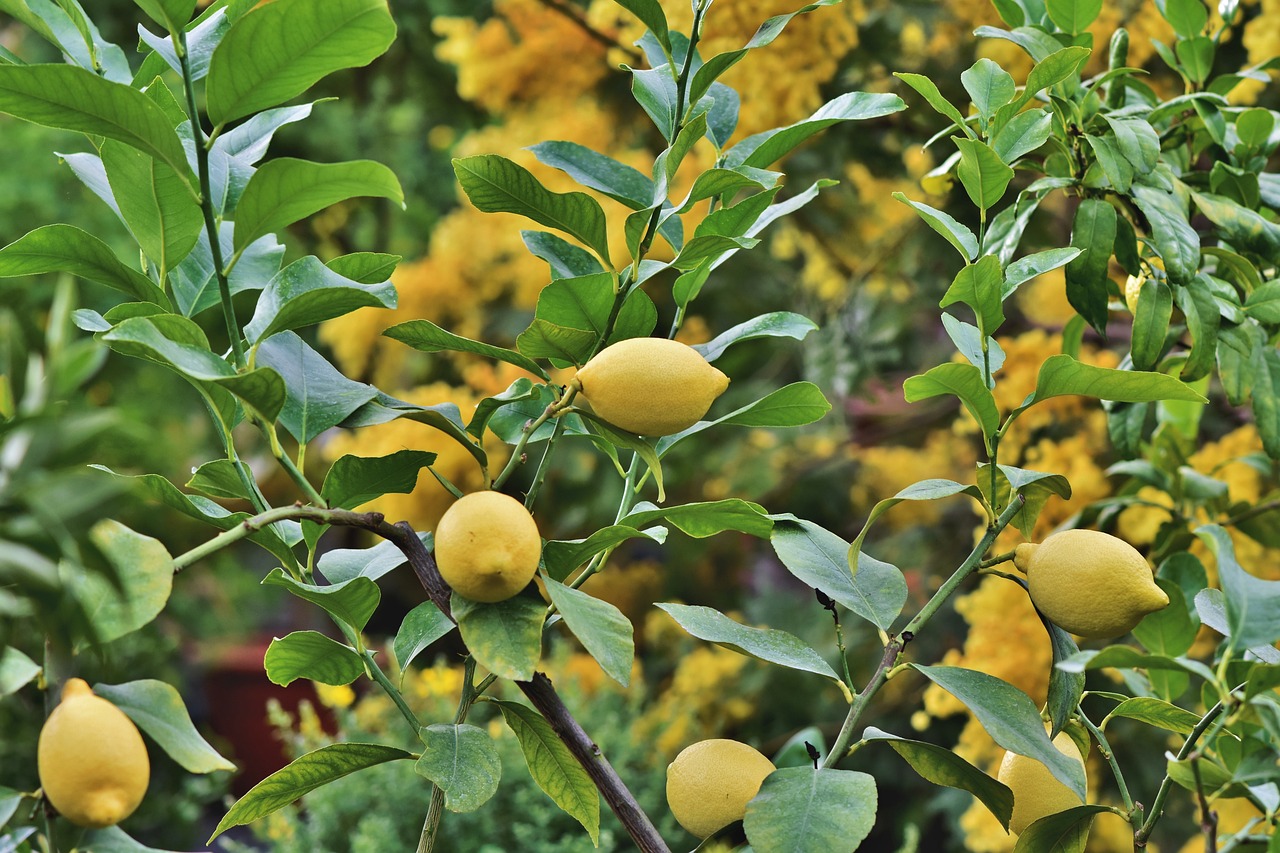
Watering and Irrigation Techniques
When it comes to nurturing your organic orchard, proper watering practices are absolutely essential. Just like humans need water to thrive, your fruit trees depend on it for their growth and productivity. But here's the kicker: not all trees have the same water needs! Understanding these requirements is crucial for ensuring your trees flourish. So, how do you effectively water your orchard? Let's dive into some techniques that can make a world of difference.
One of the most efficient methods for watering is drip irrigation. This technique delivers water directly to the roots of the trees, minimizing waste and promoting deep root growth. Imagine a gentle rain that soaks the ground just where it's needed most—this is what drip irrigation achieves. Not only does it conserve water, but it also helps maintain optimal soil moisture levels, which is particularly beneficial in organic orchards where soil health is a priority.
In addition to drip irrigation, you might want to consider rainwater harvesting. This eco-friendly approach allows you to collect and store rainwater, providing a sustainable water source for your orchard. By capturing the rain that falls on your property, you can significantly reduce your reliance on municipal water supplies and save money in the process. Plus, using rainwater is a natural way to nourish your trees, free from chemicals often found in tap water.
To illustrate the benefits of these techniques, take a look at the following table that compares traditional watering methods with drip irrigation and rainwater harvesting:
| Method | Water Efficiency | Impact on Soil Health | Cost |
|---|---|---|---|
| Traditional Sprinkler System | Low | Can lead to soil erosion | Moderate |
| Drip Irrigation | High | Improves soil moisture retention | Higher initial setup cost, but savings over time |
| Rainwater Harvesting | Very High | Natural and chemical-free | Low (after initial setup) |
Implementing these watering techniques not only supports the health of your trees but also contributes to a sustainable farming practice. Remember, the goal is to create a thriving ecosystem where your fruit trees can grow strong and produce bountiful harvests. So, keep an eye on the weather, monitor your soil moisture, and adjust your watering practices accordingly!
Now, you might be wondering, "How often should I water my trees?" This largely depends on several factors, including the type of fruit tree, the climate, and the time of year. As a general rule of thumb, young trees need more frequent watering to establish their roots, while mature trees can withstand longer periods between watering. It's always a good idea to check the soil moisture by digging a small hole near the roots to see if it feels dry or moist. Trust your instincts and adjust accordingly!
- How do I know if my trees are getting enough water? Look for signs like wilting leaves, cracked soil, or slow growth. Regularly checking soil moisture is key!
- Can I use a hose instead of a drip irrigation system? While hoses can work, they may lead to uneven watering. Drip irrigation is more efficient and better for tree health.
- What time of day is best for watering? Early morning or late afternoon is ideal to minimize evaporation and allow the water to soak in.
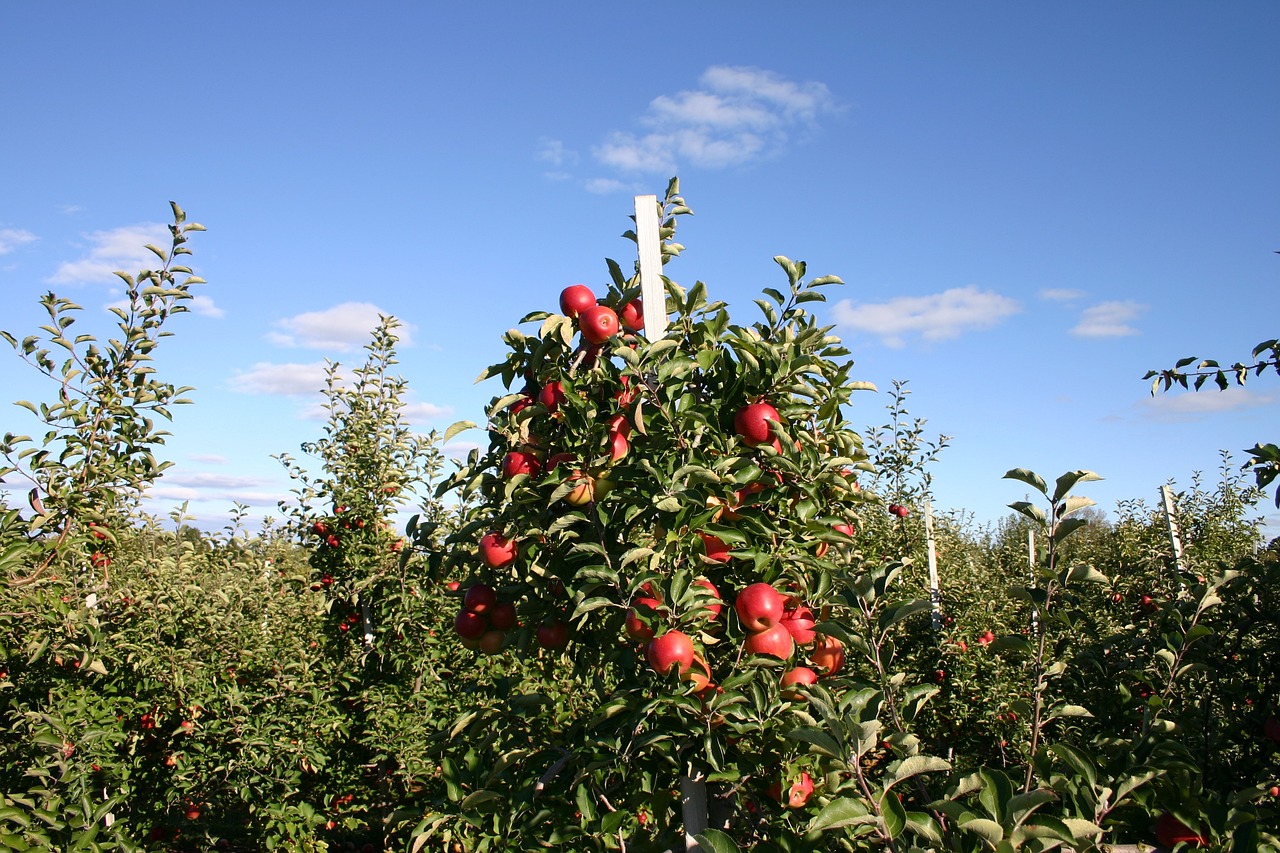
Drip Irrigation Benefits
When it comes to nurturing your organic orchard, drip irrigation stands out as a game-changer. This method delivers water directly to the roots of your trees, ensuring that each plant receives the precise amount of moisture it needs. Imagine watering your trees with a gentle rain that soaks deep into the soil, rather than a heavy downpour that runs off. This targeted approach not only conserves water but also promotes deeper root growth, enabling your trees to thrive even in challenging conditions.
One of the most significant advantages of drip irrigation is its ability to minimize water wastage. Traditional irrigation methods can lead to substantial evaporation and runoff, especially in hot climates. With drip irrigation, the water is delivered directly to the soil at a slow rate, which allows for better absorption. This efficiency is particularly beneficial in organic farming, where maintaining soil health is paramount. By reducing water waste, you are not just saving resources; you are also contributing to a more sustainable ecosystem.
Moreover, drip irrigation helps in controlling weed growth. Since water is applied directly to the roots of your trees, the surrounding areas remain dry, which discourages weed germination. This means less competition for nutrients and moisture, allowing your fruit trees to flourish. Additionally, with fewer weeds, there's a reduced need for herbicides, aligning perfectly with organic farming principles.
Another remarkable benefit of drip irrigation is its adaptability. It can be tailored to the specific needs of different plants in your orchard. For instance, if you have a variety of trees that require varying amounts of water, you can adjust the flow rates and schedules accordingly. This flexibility ensures that each tree receives the optimal care it needs to produce a bountiful harvest.
Lastly, drip irrigation systems can be easily integrated with rainwater harvesting solutions. By collecting rainwater and directing it into your drip irrigation system, you create a sustainable cycle that not only conserves water but also enhances the health of your orchard. This synergy between rainwater harvesting and drip irrigation is a perfect example of how modern techniques can harmonize with nature to achieve remarkable results.
- What is drip irrigation? Drip irrigation is a method of watering plants by delivering water directly to the roots through a network of tubing and emitters.
- How does drip irrigation save water? It minimizes evaporation and runoff by applying water slowly and directly to the soil, allowing for better absorption.
- Can I use drip irrigation in an organic orchard? Yes, drip irrigation is highly compatible with organic farming practices, promoting soil health and reducing the need for chemical inputs.
- What are the maintenance requirements for a drip irrigation system? Regular checks for clogs, leaks, and system efficiency are essential to ensure optimal performance.
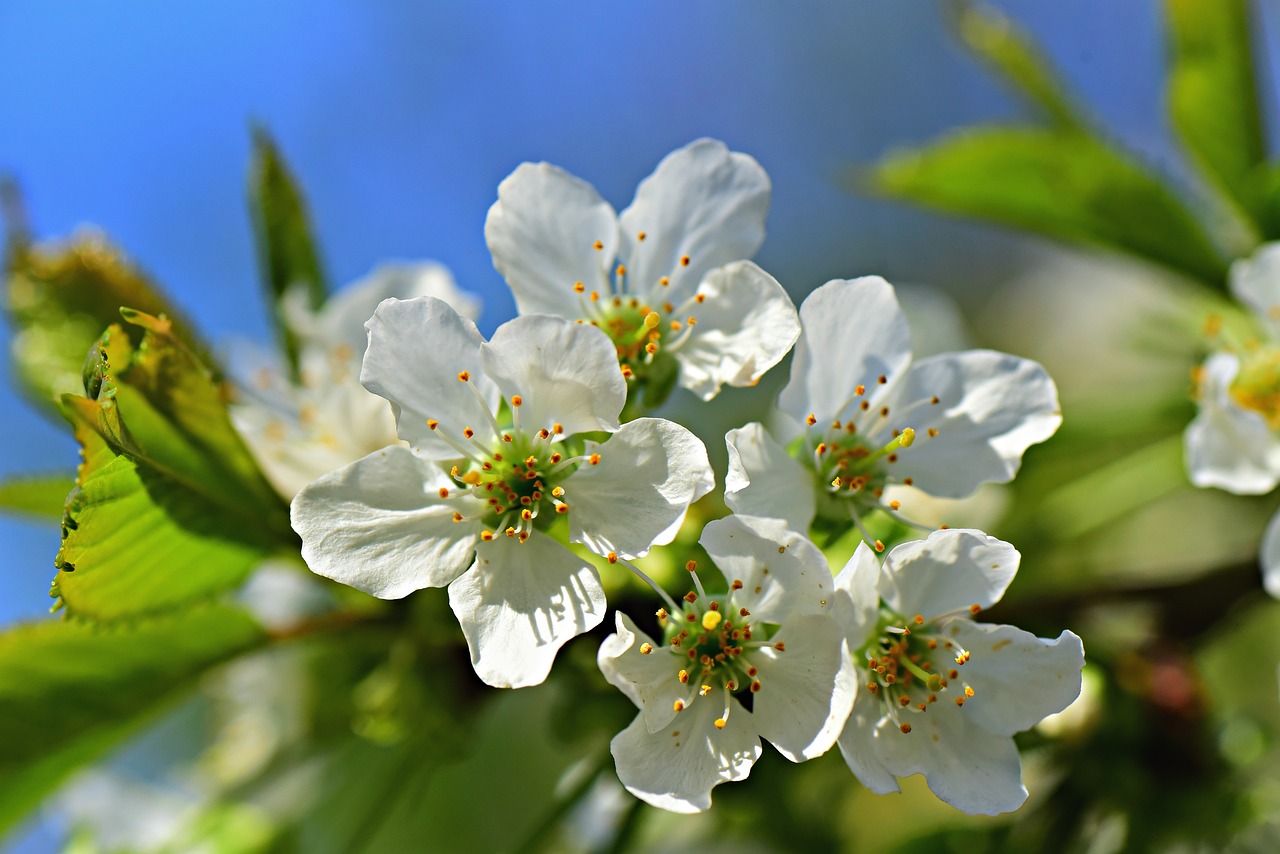
Rainwater Harvesting
This article explores the essential steps and strategies for establishing and nurturing a thriving organic orchard, focusing on sustainable practices, pest management, and soil health to ensure fruitful yields.
Selecting an appropriate site for your orchard is crucial. Factors such as sunlight, drainage, and soil quality will significantly affect the growth and productivity of your organic fruit trees.
Healthy soil is the foundation of a successful orchard. Understanding soil composition, pH levels, and organic amendments can enhance nutrient availability and promote robust tree growth.
Regular soil testing helps identify nutrient deficiencies and pH imbalances. This knowledge allows for targeted amendments to optimize conditions for your fruit trees.
Utilizing organic materials like compost, manure, and cover crops enriches the soil. These amendments improve soil structure, enhance microbial activity, and provide essential nutrients for tree health.
Choosing the right fruit varieties is vital for your orchard's success. Consider climate, disease resistance, and market demand when selecting trees that will thrive in your environment.
Each fruit variety has specific climate requirements. Understanding your local climate helps in selecting varieties that will flourish and produce high-quality fruit.
Opting for disease-resistant fruit varieties minimizes the need for chemical interventions, promoting a healthier orchard ecosystem and reducing the risk of crop loss.
Effective pest management is essential for maintaining an organic orchard. Implementing integrated pest management (IPM) techniques can help control pests while minimizing harm to beneficial organisms.
Encouraging beneficial insects, such as ladybugs and lacewings, can naturally control pest populations. Creating habitats for these insects enhances biodiversity and promotes a balanced ecosystem in the orchard.
Utilizing organic pest control methods, like neem oil or insecticidal soaps, can effectively manage infestations while adhering to organic standards, ensuring the safety of your harvest.
Proper watering practices are crucial for tree health and fruit production. Understanding the water needs of your orchard and implementing efficient irrigation systems can optimize growth.
Drip irrigation delivers water directly to the roots, reducing water waste and promoting deep root growth. This method is particularly effective in maintaining soil moisture levels in organic orchards.
Implementing rainwater harvesting systems can provide a sustainable water source for your orchard. Collecting and storing rainwater helps conserve resources and reduces reliance on municipal water supplies. Not only is it environmentally friendly, but it also cuts down on water costs, making it a win-win situation for orchardists.
To set up a rainwater harvesting system, consider the following components:
- Catchment Area: This is typically your roof, where rainwater will be collected.
- Gutters and Downspouts: These channels direct rainwater from the roof to storage tanks.
- Storage Tanks: Use tanks to store collected rainwater for later use in irrigation.
- Filtration System: Ensure the water is clean and free from debris before it enters the storage tank.
By utilizing rainwater harvesting, you can significantly enhance the sustainability of your orchard. It promotes a circular economy where you are not just consuming resources but also replenishing them. Plus, rainwater is often softer and free from chemicals found in municipal water, making it ideal for nurturing your organic trees.
Pruning and training are essential practices for maintaining tree health and maximizing fruit production. Proper techniques promote airflow, light penetration, and shape the tree for optimal growth.
Understanding the best times to prune different fruit trees is crucial. Pruning at the right time encourages new growth and improves fruit quality while minimizing stress on the trees.
Training young trees helps establish a strong structure and encourages healthy growth. Techniques such as staking and thinning can guide tree development for better fruit production.
Harvesting at the right time and ensuring proper post-harvest care are vital for maintaining fruit quality. Understanding the signs of ripeness and storage methods can enhance shelf life.
Knowing when to harvest is key to ensuring optimal flavor and texture. Each fruit variety has specific indicators of ripeness that should be closely monitored.
Proper storage techniques can prolong the freshness of harvested fruit. Implementing cool storage conditions and appropriate packaging helps maintain quality until the fruit reaches consumers.
Effectively marketing your organic produce is essential for business success. Understanding your target market and employing diverse marketing strategies can enhance visibility and sales.
Creating a strong brand identity helps differentiate your organic produce in a competitive market. Highlighting your sustainable practices and quality can attract environmentally conscious consumers.
Participating in farmers' markets provides direct access to consumers, fostering community connections. This venue allows you to showcase your organic produce while gaining valuable customer feedback.
Q1: What are the benefits of organic orchards?
A1: Organic orchards promote healthier ecosystems, reduce chemical usage, and often yield higher-quality fruit.
Q2: How often should I water my organic orchard?
A2: Watering frequency depends on the tree species and local climate; generally, deep watering every week is beneficial.
Q3: Can I use chemical fertilizers in an organic orchard?
A3: No, organic orchards rely on natural amendments and practices to maintain soil health and tree vitality.
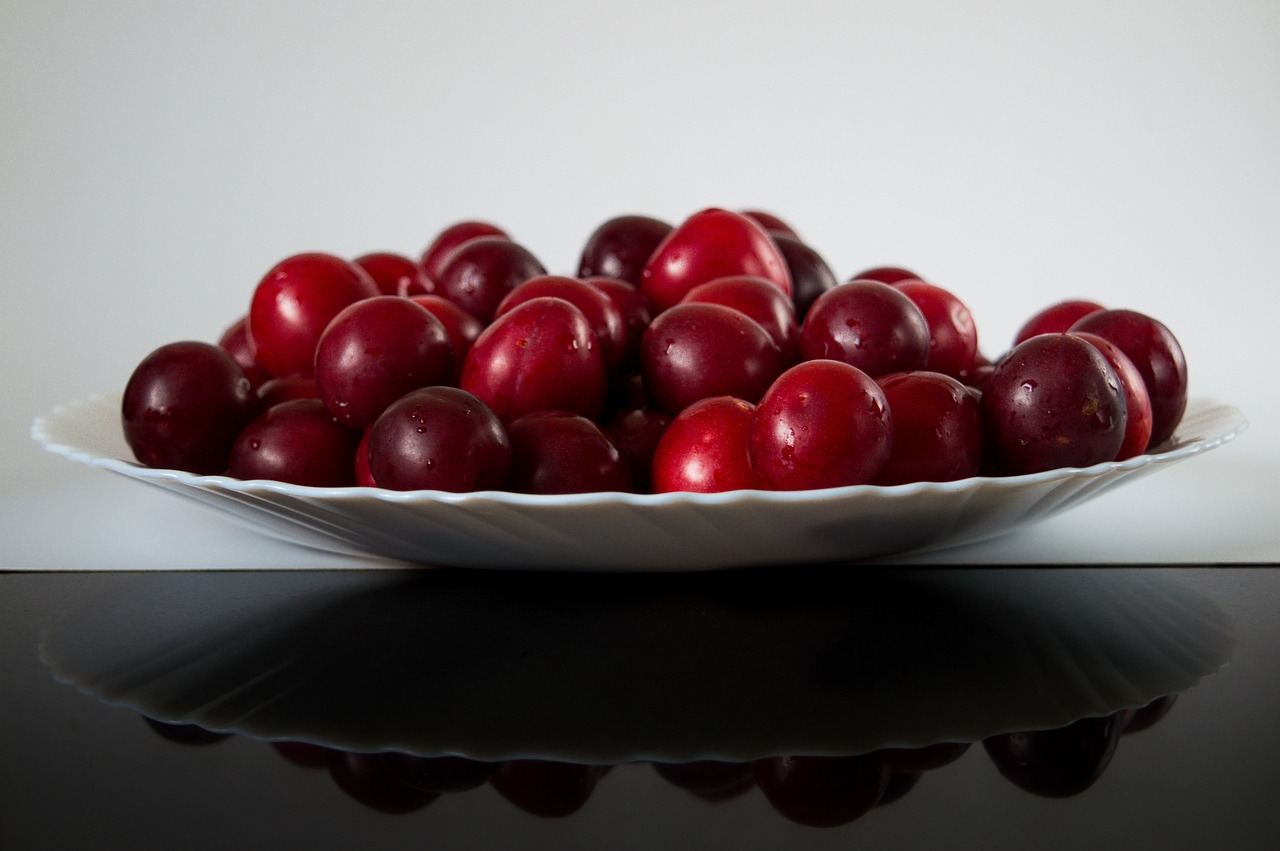
Pruning and Training Techniques
Pruning and training your fruit trees is not just a task; it's an art form that requires a keen eye and a gentle touch. These practices are essential for maintaining tree health and maximizing fruit production. Think of pruning as giving your trees a haircut—it's all about enhancing their natural beauty while promoting better growth. By carefully removing dead or overgrown branches, you allow sunlight to penetrate the canopy, improving air circulation and reducing the risk of diseases. Proper pruning also encourages the tree to direct its energy into producing high-quality fruit, rather than just foliage.
But when should you grab those pruning shears? Timing is everything! Each type of fruit tree has its own ideal pruning window, which can vary based on the species and local climate. For instance, many deciduous trees benefit from winter pruning when they are dormant, while others, like stone fruits, might thrive with summer pruning to control their growth. Understanding these nuances can make a substantial difference in the health and productivity of your orchard.
Training young trees is equally important, as it helps them develop a strong structure right from the start. Imagine training a young tree like guiding a child as they learn to walk. You want to provide support and direction without being too forceful. Techniques such as staking can help young trees stand tall against the wind, while thinning can encourage the best branches to grow strong and healthy. By shaping your trees early on, you set the stage for a fruitful future.
Here are some key techniques you might consider when pruning and training your trees:
- Thinning: This involves selectively removing branches to reduce overcrowding, allowing better light and air circulation.
- Heading Back: Cutting back branches to encourage bushier growth can be particularly beneficial for certain varieties.
- Espalier: This technique involves training trees to grow flat against a structure, optimizing space and sunlight exposure.
Maintaining a consistent pruning schedule will not only enhance the aesthetic appeal of your orchard but also ensure that your trees remain healthy and productive. Regularly assessing the growth and structure of your trees allows you to make informed decisions about when and how much to prune. Remember, the goal is to create an environment where your trees can thrive, producing bountiful harvests year after year.
Q: When is the best time to prune fruit trees?
A: The best time to prune depends on the type of tree. Generally, late winter or early spring is ideal for most deciduous trees, while summer pruning is effective for stone fruits.
Q: How much should I prune my trees?
A: It's recommended to remove no more than 25% of the tree's canopy in a single season to avoid stressing the tree.
Q: Can I prune my trees in the fall?
A: Pruning in the fall can encourage new growth before winter dormancy, but it may also expose the tree to cold damage. It's best to avoid it unless necessary.
Q: What tools do I need for pruning?
A: Essential tools include pruning shears, loppers for larger branches, and a pruning saw for thicker limbs. Always ensure your tools are sharp and clean to make precise cuts.
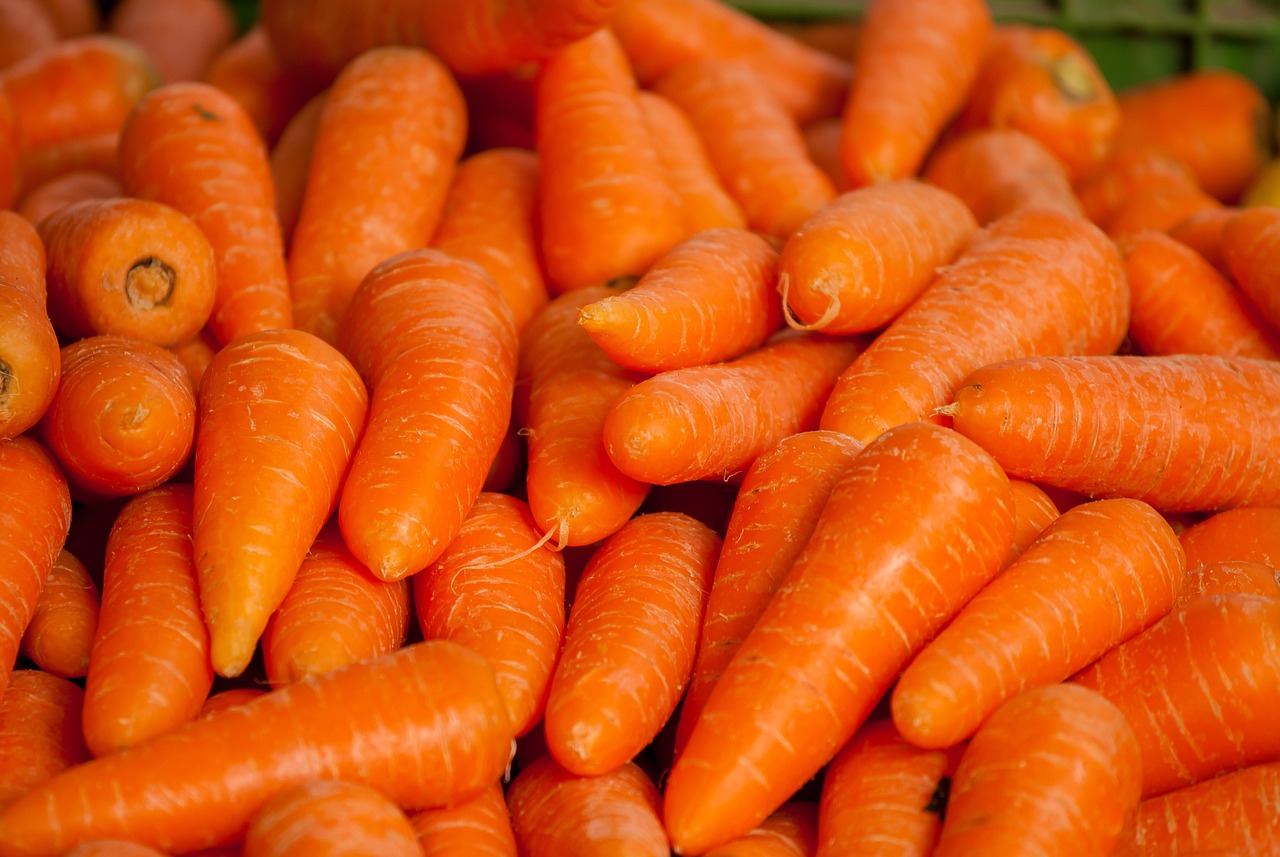
Timing Your Pruning
When it comes to pruning your fruit trees, timing is everything. Pruning at the right moment can make the difference between a bountiful harvest and a lackluster yield. Generally, the best time to prune most fruit trees is during their dormant season, which typically falls in late winter to early spring. This timing allows trees to heal quickly before the growing season begins, minimizing stress and promoting vigorous new growth.
However, not all trees are created equal, and different species have unique needs. For instance, stone fruits like cherries and peaches benefit from pruning in late winter, while pome fruits such as apples and pears are best pruned in early spring. This is because stone fruits bloom on last year’s growth, and pruning them too late can remove potential blossoms. On the other hand, pome fruits bloom on this year’s growth, making early spring pruning more advantageous.
Here’s a quick overview of the best pruning times for various fruit trees:
| Fruit Type | Best Pruning Time |
|---|---|
| Apples | Early Spring |
| Pears | Early Spring |
| Cherries | Late Winter |
| Peaches | Late Winter |
In addition to species, the age of the tree plays a crucial role in determining when to prune. Young trees require formative pruning to establish a strong structure, while mature trees often need maintenance pruning to remove dead or diseased branches and improve airflow. It’s also essential to observe the tree's growth habits; if you notice excessive growth or overcrowding, it may be time to prune, even outside the typical window.
One common mistake many novice orchardists make is waiting too long to prune. Trees that are pruned too late may experience shock, leading to reduced fruit production. On the flip side, over-pruning can also be detrimental, stripping the tree of necessary foliage and reducing its ability to photosynthesize. Always aim for a balanced approach, removing no more than 25% of the tree’s canopy in a single season.
For those who are unsure about when to prune, it can be helpful to keep a pruning calendar. This can include reminders for specific trees, along with notes on their growth patterns and any observations made throughout the year. By understanding your trees and their needs, you’ll be well on your way to mastering the art of pruning.
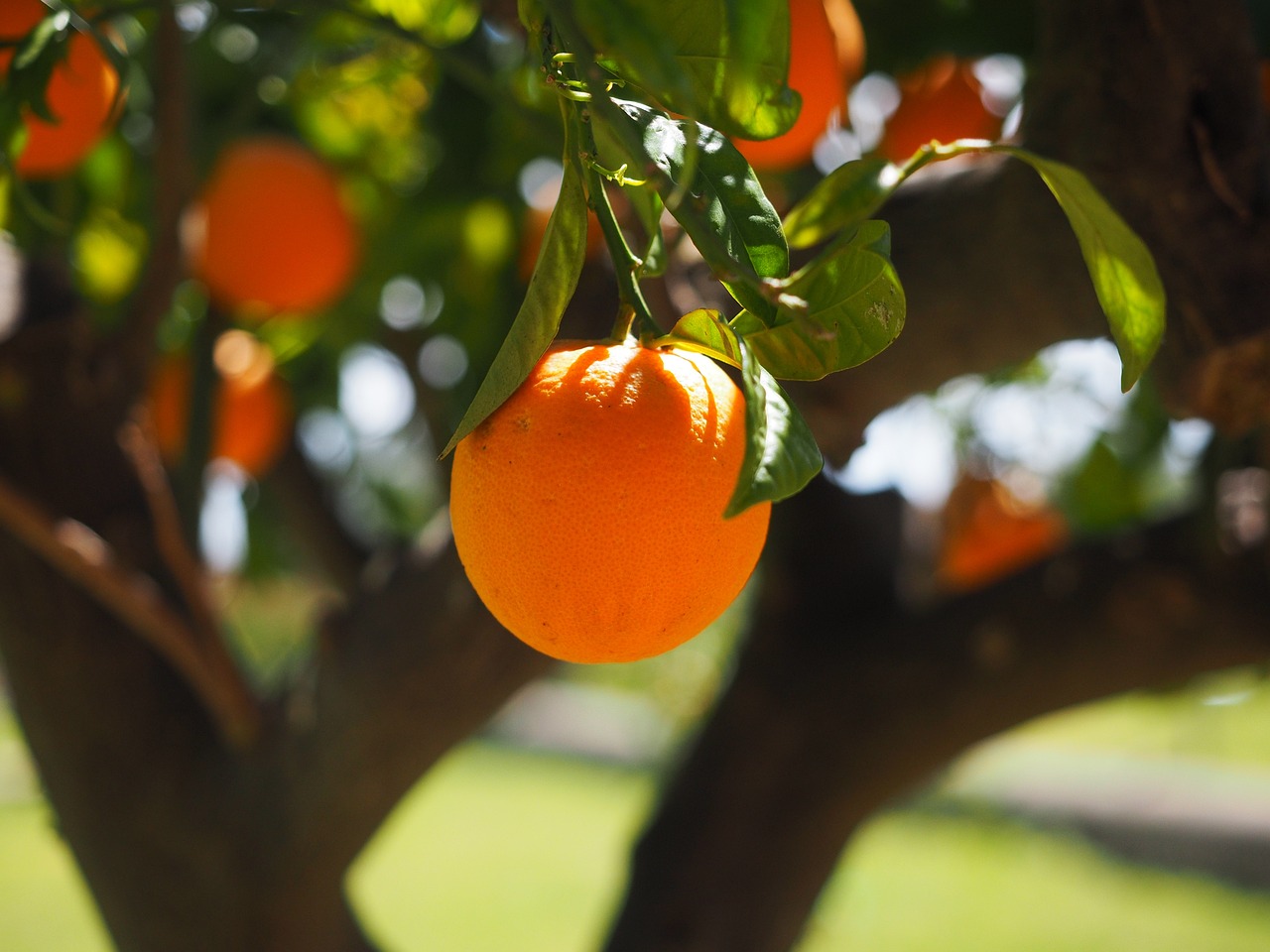
Training Young Trees
Training young trees is a crucial step in establishing a healthy and productive orchard. Think of it as teaching your trees how to stand tall and proud, much like coaching a young athlete to develop their skills. The right training techniques not only shape the tree's growth but also enhance fruit production and overall health. When you train a tree, you're essentially guiding its structure to ensure it can support the weight of its future fruits while allowing adequate sunlight and air circulation.
One of the most effective methods for training young trees is through staking. This involves placing a sturdy stake next to the tree and gently tying the trunk to it. By doing this, you provide support against strong winds and prevent the tree from leaning, which can lead to structural weaknesses. It’s important to use soft ties to avoid damaging the bark. Over time, as the tree establishes its root system and gains strength, you can gradually remove the stake, allowing it to grow freely.
Another important technique is thinning. This process involves selectively removing some branches to improve airflow and light penetration. Think of it like giving your tree a haircut; it might look a bit bare at first, but it will grow back healthier and more robust. When thinning, focus on removing any branches that cross over each other or grow inward, as they can create a crowded environment that invites pests and diseases.
Moreover, the timing of your training is vital. Young trees are most receptive to training when they are actively growing, typically in the spring and early summer. During this period, the trees are full of energy and can adapt to your training efforts more effectively. By being attentive to the growth stages of your trees, you can ensure that your training efforts yield the best results.
In addition to staking and thinning, consider the following tips for training young trees:
- Choose the right leader: Select the strongest central stem to be the main leader of the tree. This will help create a strong structure.
- Encourage lateral branches: Allow several lateral branches to develop at different heights. This will create a well-balanced canopy.
- Monitor growth: Regularly check your trees for signs of uneven growth or stress, and adjust your training techniques accordingly.
In conclusion, training young trees is an ongoing process that requires patience and observation. By employing these techniques, you can foster strong, healthy trees that will reward you with abundant fruit for years to come. Remember, a well-trained tree is not just a tree; it's a future harvest waiting to happen!
1. When is the best time to start training young trees?
The best time to start training young trees is in the spring and early summer when they are actively growing. This is when they are most receptive to changes.
2. How often should I check on my young trees?
It's a good idea to check on your young trees at least once a week during the growing season. This allows you to monitor their growth and make any necessary adjustments to your training techniques.
3. Can I train trees that are already a few years old?
Yes, while it's easier to train young trees, older trees can still be trained. However, it may require more effort and care to reshape their growth.
4. What materials do I need for staking?
You will need sturdy stakes, soft ties (like fabric or rubber), and possibly a level to ensure that the tree is growing straight.
5. How do I know if my tree is healthy enough to be trained?
A healthy tree will have strong, green leaves, a robust trunk, and a well-developed root system. If the tree shows signs of stress or disease, it may be best to wait until it recovers before training.
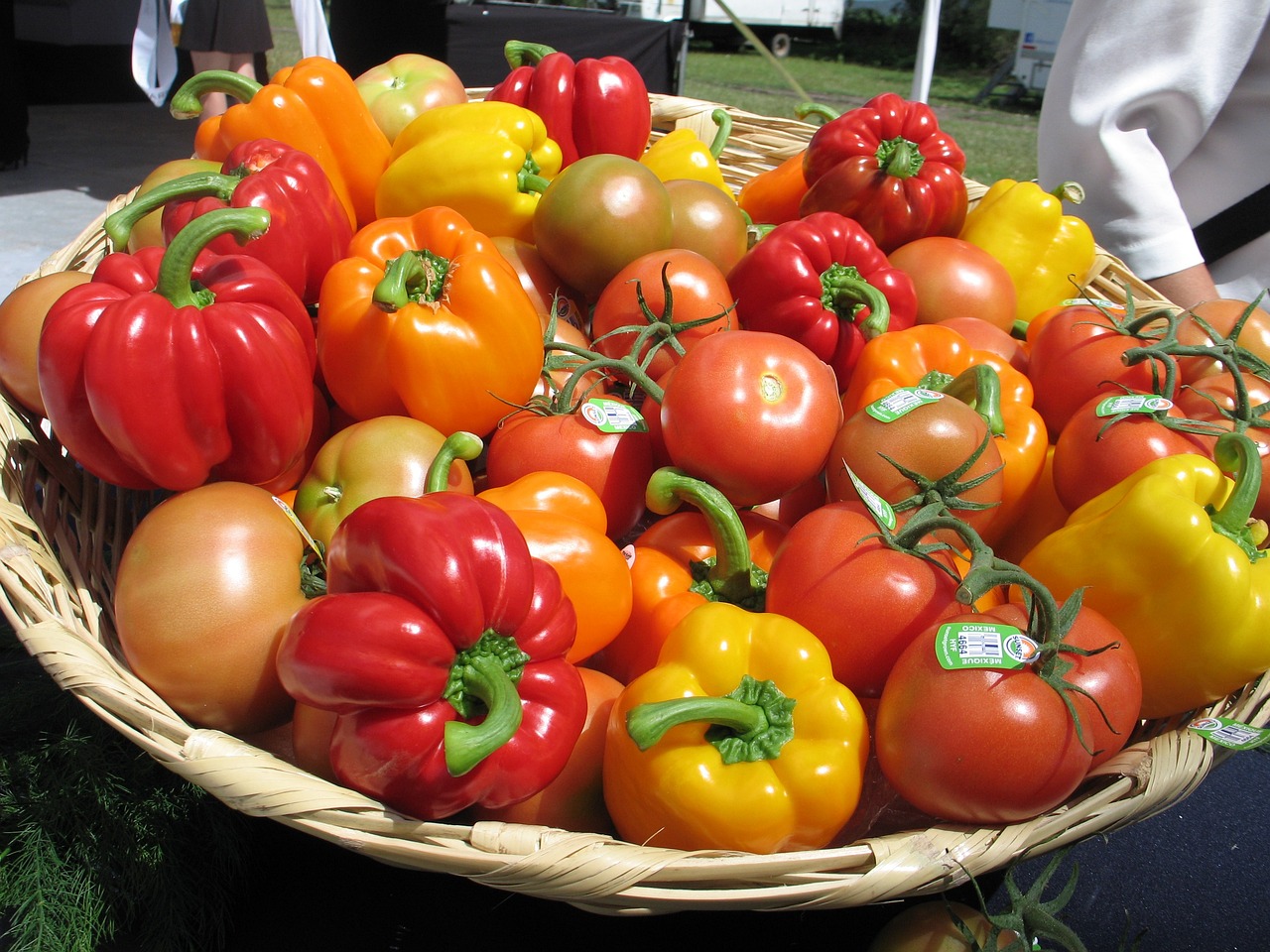
Harvesting and Post-Harvest Care
Harvesting is not just about picking fruit; it's a delicate dance of timing, technique, and care that can make or break your organic orchard’s success. Knowing when to harvest is crucial for ensuring that your fruits have reached their peak flavor and nutritional value. Each fruit variety has its own unique signs of ripeness, which can include changes in color, firmness, and even aroma. For example, a ripe peach will yield slightly to pressure and emit a sweet fragrance, while apples might have a more subtle change in color. Keeping a close eye on these indicators is essential for maximizing your harvest's quality.
Once you've successfully harvested your fruit, the next step is to focus on post-harvest care. This phase is often overlooked but is just as important as the harvesting process itself. Proper handling and storage techniques can significantly prolong the freshness and quality of your produce. For instance, fruits should be handled gently to avoid bruising, which can lead to spoilage. After harvesting, it's vital to sort the fruits, separating those that are blemished or overripe from the pristine ones. This sorting process not only helps in maintaining quality but also ensures that only the best fruits reach your customers.
Storage conditions play a pivotal role in maintaining the quality of your harvested fruits. Here are some key factors to consider:
- Temperature: Most fruits store best at cool temperatures. For example, apples and pears thrive in 30-40°F (about -1 to 4°C).
- Humidity: Maintaining high humidity levels can prevent fruits from drying out. A humidity level of around 90% is ideal for many varieties.
- Ventilation: Proper airflow is essential to reduce the risk of mold and rot. Ensure that your storage area is well-ventilated.
To illustrate these points, here's a simple table summarizing optimal storage conditions for some common fruits:
| Fruit | Optimal Temperature (°F) | Optimal Humidity (%) |
|---|---|---|
| Apples | 30-40 | 90 |
| Peaches | 32-40 | 85-90 |
| Pears | 30-35 | 90 |
| Strawberries | 32-36 | 90-95 |
In addition to temperature and humidity, it's essential to consider the packaging of your fruits. Using breathable materials can help maintain moisture while preventing the buildup of ethylene gas, which can accelerate ripening and spoilage. For delicate fruits, padded containers or clamshells can provide extra protection during handling and transport.
Finally, understanding the market demand and timing your sales accordingly can also influence the success of your post-harvest care. If you know a local farmers' market is coming up, plan your harvest and storage to ensure peak freshness for that event.
Q: How do I know when my fruit is ripe enough to harvest?
A: Each fruit variety has specific indicators of ripeness, such as color change, firmness, and aroma. For example, a ripe tomato will feel slightly soft to the touch and have a rich color.
Q: What is the best way to store harvested fruits?
A: Store fruits in a cool, humid environment with good ventilation. Using breathable packaging can also help maintain freshness.
Q: Can I harvest fruits early and let them ripen at home?
A: Some fruits can ripen off the tree, but it's best to harvest them at their peak ripeness for the best flavor and quality.
Q: How can I prevent bruising during harvest?
A: Handle fruits gently, and consider using padded containers to provide extra cushioning during transport.
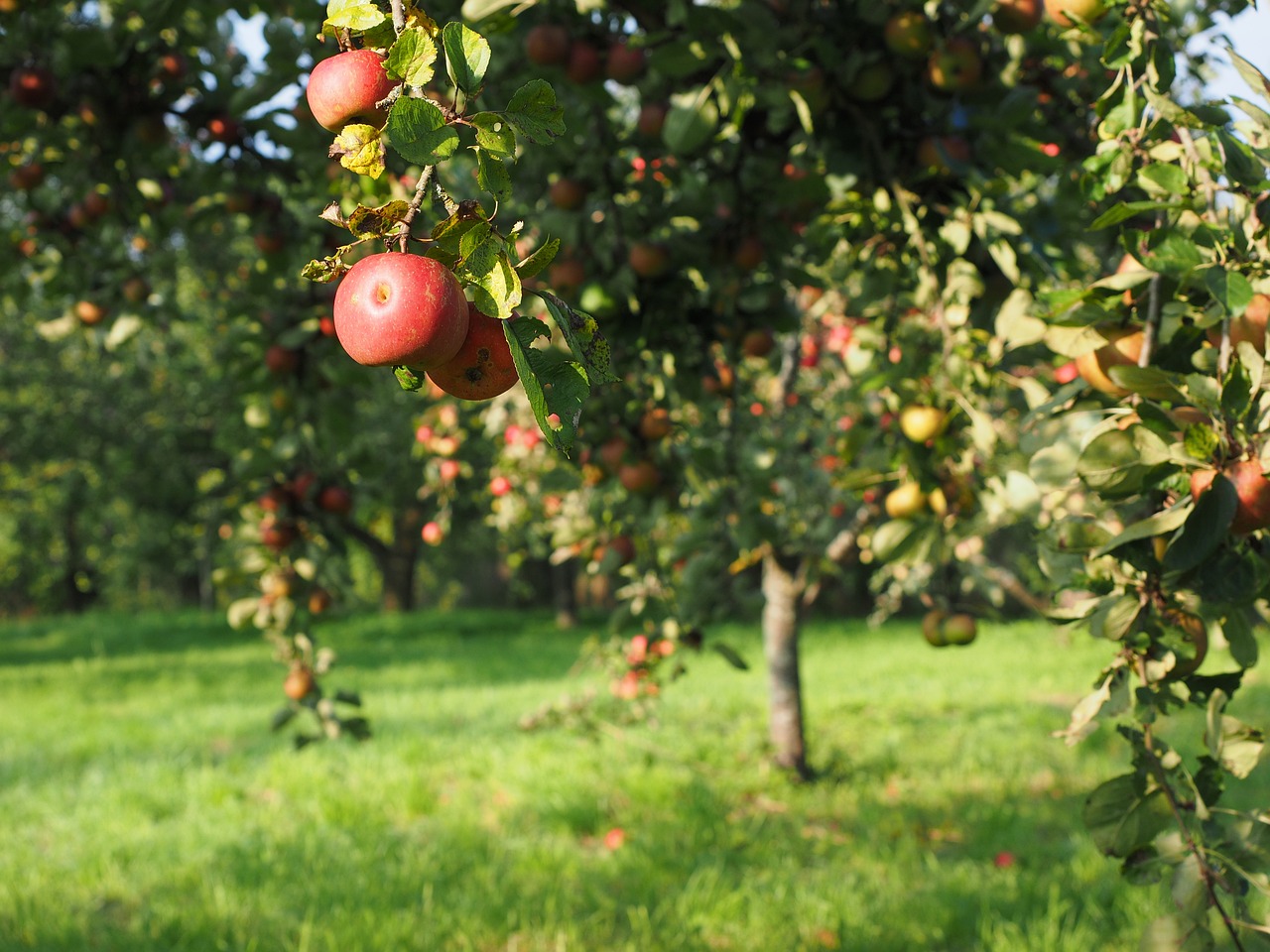
Identifying Ripeness
Knowing when to harvest your fruits is not just an art; it's a science that can make or break your orchard's success. Each fruit variety has its own unique indicators of ripeness, and understanding these signs is crucial for ensuring optimal flavor and texture. Imagine biting into a juicy peach or a crisp apple; that delightful experience starts with the perfect timing of your harvest. So, how can you tell when your fruits are ready to be picked? Let's delve into some key factors to consider.
First and foremost, color plays a significant role in determining ripeness. Many fruits change color as they mature. For example, a banana transitions from green to yellow, while tomatoes shift from green to a vibrant red. Observing these color changes can give you a reliable indication of when to harvest. However, color alone isn't the only factor; you also want to examine the texture. Gently squeezing the fruit can help you gauge its firmness. A ripe peach should yield slightly to pressure, indicating it's ready for consumption.
In addition to color and texture, aroma is another telltale sign of ripeness. Ripe fruits often emit a sweet, fragrant smell that can be quite enticing. For instance, the aroma of a ripe cantaloupe is unmistakable, and it can guide you to the perfect harvest time. Furthermore, understanding the size of the fruit is essential. Each variety has a typical size range, and while some fruits may not grow to their maximum size, they can still be ripe and delicious. Thus, knowing the expected size for your specific variety can help you make informed decisions.
To summarize, here are some vital indicators to look for when identifying the ripeness of fruits:
- Color: Look for the characteristic color of the fruit variety.
- Texture: Gently squeeze to check for slight softness.
- Aroma: A sweet scent often indicates ripeness.
- Size: Familiarize yourself with the expected size of the fruit.
By paying attention to these key indicators, you'll be well on your way to harvesting fruits at their peak, ensuring that your orchard produces the best quality yields. Remember, the goal is not just to harvest but to deliver a product that delights the taste buds of your customers. The right timing can transform your fruit from ordinary to extraordinary!
Q: How can I tell when apples are ripe?
A: Look for a bright color, slight softness when squeezed, and a sweet aroma. Most importantly, check the size against what is typical for the variety.
Q: Is it better to harvest fruits early or late?
A: Harvesting too early can result in sour, less flavorful fruit, while waiting too long can lead to overripe, mushy fruit. Aim for the sweet spot in between!
Q: Can I use a chart to determine fruit ripeness?
A: Yes, many resources provide ripeness charts for different fruit varieties, detailing visual and tactile indicators to help guide your harvesting decisions.
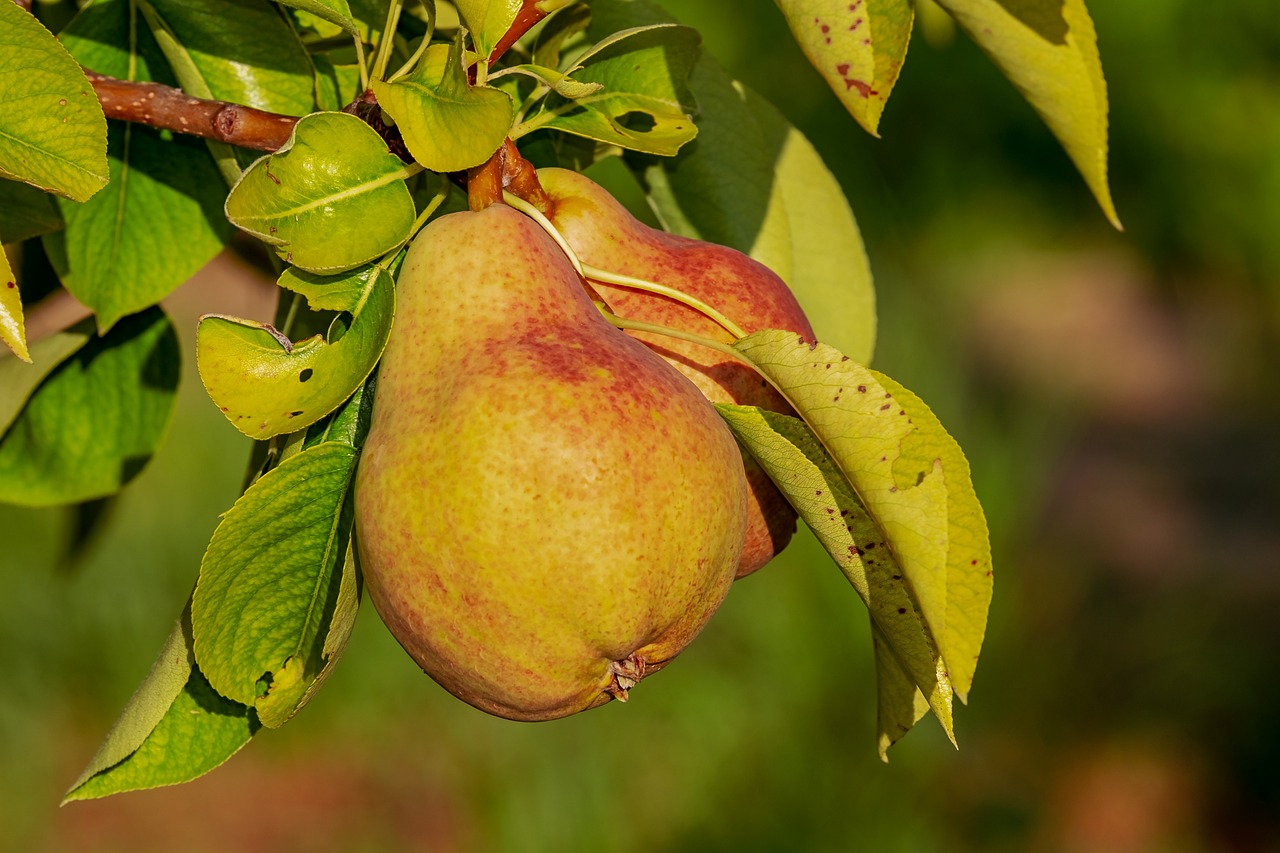
Storage Techniques
When it comes to preserving the freshness of your harvested fruit, play a pivotal role. The right approach can significantly extend the shelf life of your produce while maintaining its quality. First and foremost, understanding the specific needs of each fruit variety is crucial. For instance, apples and pears typically fare well in cooler temperatures, while berries prefer a slightly warmer environment. This knowledge allows you to tailor your storage methods effectively.
One of the most effective methods for storing fresh fruit is by utilizing cool storage conditions. Ideally, fruits should be stored in a temperature-controlled environment to slow down the ripening process. A temperature range of 32°F to 41°F (0°C to 5°C) is often recommended for most fruits. In addition, maintaining proper humidity levels—around 90%—can help prevent moisture loss and keep fruits plump and juicy.
Another essential aspect of storage is the packaging of your fruit. Using breathable materials, such as cardboard boxes or mesh bags, allows for air circulation, which helps to reduce the risk of mold and spoilage. Avoid plastic bags, as they can trap moisture and create an environment conducive to decay. To illustrate this, consider the following table:
| Fruit Type | Ideal Storage Temperature (°F) | Recommended Packaging |
|---|---|---|
| Apples | 32-35 | Cardboard boxes |
| Berries | 32-34 | Clamshell containers |
| Pears | 30-35 | Breathable bags |
Moreover, it’s crucial to regularly check your stored fruits for any signs of spoilage. Rotten or damaged fruits can emit ethylene gas, which accelerates the ripening of nearby fruits, leading to a domino effect of spoilage. By promptly removing any compromised fruit, you can help maintain the overall quality of your storage.
Lastly, consider implementing a rotation system for your stored produce. This means using the first-in, first-out (FIFO) method, where older fruit is used before newer arrivals. This practice not only minimizes waste but also ensures that your customers receive the freshest products possible.
In conclusion, mastering the art of storage techniques is essential for anyone looking to maintain the quality of their organic produce. By understanding the specific needs of different fruits, utilizing appropriate storage conditions, and implementing effective packaging strategies, you can ensure that your harvest remains fresh and appealing to consumers.
- What is the best temperature for storing fruits? Most fruits thrive in a temperature range of 32°F to 41°F (0°C to 5°C).
- How can I tell if my fruit is spoiled? Look for signs such as soft spots, discoloration, or an off smell.
- Should I wash fruit before storing it? It’s best to wash fruit just before consumption to prevent moisture buildup during storage.
- Can I store different types of fruit together? It's advisable to store fruits separately, as some fruits produce ethylene gas that can cause others to ripen too quickly.
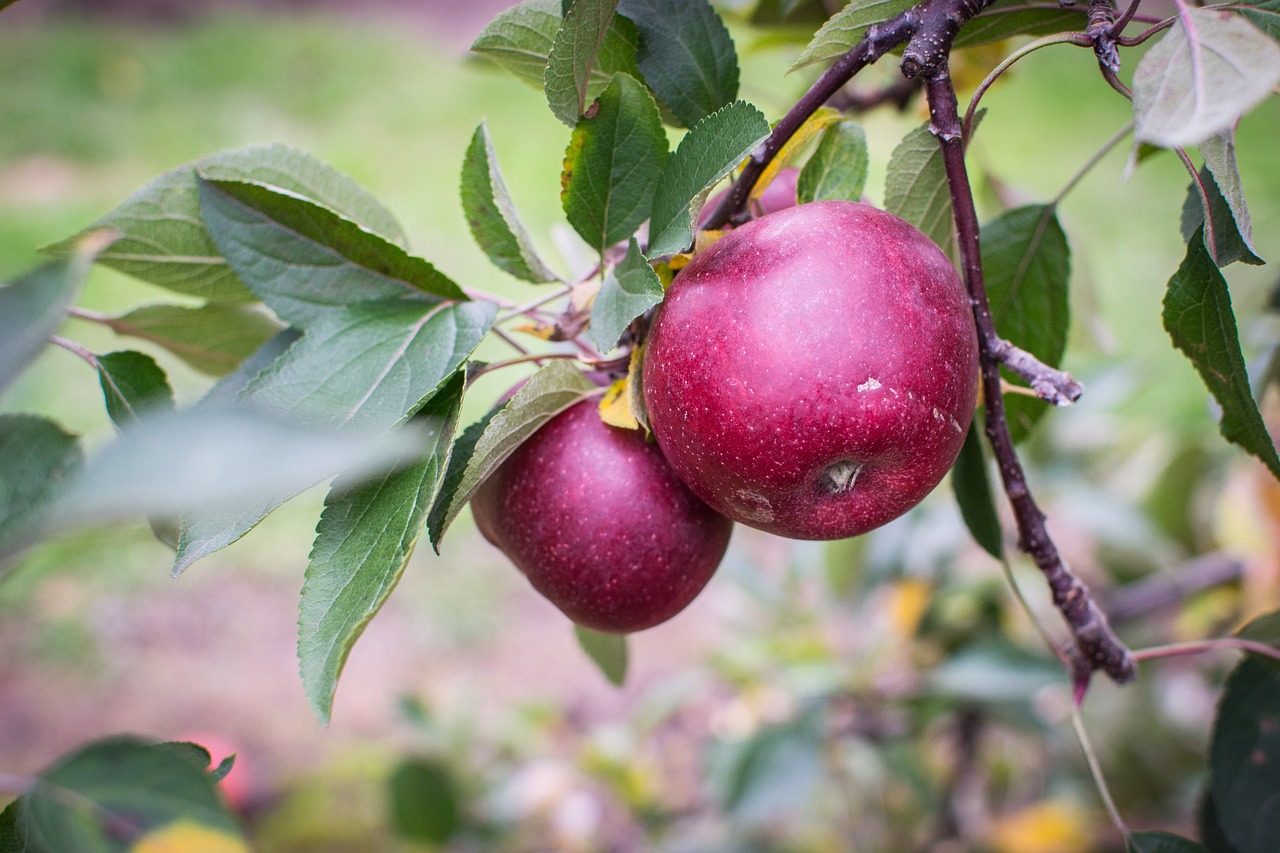
Marketing Your Organic Produce
Effectively marketing your organic produce is essential for business success. In today's world, where consumers are increasingly conscious of their food choices, having a solid marketing strategy can set you apart from the competition. So, how do you go about it? Well, first, you need to understand your target market. Who are they? What do they care about? Knowing your audience allows you to tailor your messages and offerings to meet their needs.
One of the most vital aspects of marketing is creating a strong brand identity. Your brand is more than just a name; it’s the story behind your produce, the values you stand for, and the quality you promise. Highlighting your sustainable practices—like organic farming techniques and eco-friendly packaging—can attract environmentally conscious consumers. Think of your brand as the face of your orchard; it should resonate with your audience and communicate your commitment to quality and sustainability.
Utilizing various marketing channels can also enhance your visibility. For instance, participating in farmers' markets not only provides direct access to consumers but also fosters community connections. It’s a fantastic way to showcase your organic produce and engage with customers on a personal level. When you’re face-to-face with your audience, you can share your passion for organic farming, answer their questions, and build trust. Plus, it allows you to gain valuable feedback that can help you improve your offerings.
Another effective marketing strategy is to leverage social media. Platforms like Instagram and Facebook are great for visually showcasing your produce. Post vibrant pictures of your fruits, share recipes, and tell the story of your orchard. Engaging content can create a loyal following and encourage word-of-mouth marketing, which is incredibly powerful. You might even consider hosting virtual farm tours or live Q&A sessions to connect with your audience in real-time.
Finally, consider collaborating with local businesses or health-focused organizations. Partnerships can expand your reach and introduce your produce to new customers. For example, you could collaborate with local restaurants to feature your fruits on their menus or partner with health food stores for special promotions. These alliances not only boost your visibility but also strengthen your community ties.
In conclusion, marketing your organic produce involves understanding your audience, building a strong brand, utilizing diverse marketing channels, and fostering community connections. By implementing these strategies, you can enhance your visibility and sales, ensuring the success of your organic orchard.
- What is the best way to market my organic produce?
Utilizing a combination of social media, farmers' markets, and community partnerships can effectively reach your target audience. - How can I create a strong brand identity?
Focus on your story, values, and the quality of your produce. Highlight your sustainable practices to attract conscious consumers. - Is participating in farmers' markets worth it?
Yes! Farmers' markets provide direct access to consumers and allow for personal engagement, which can build trust and loyalty.
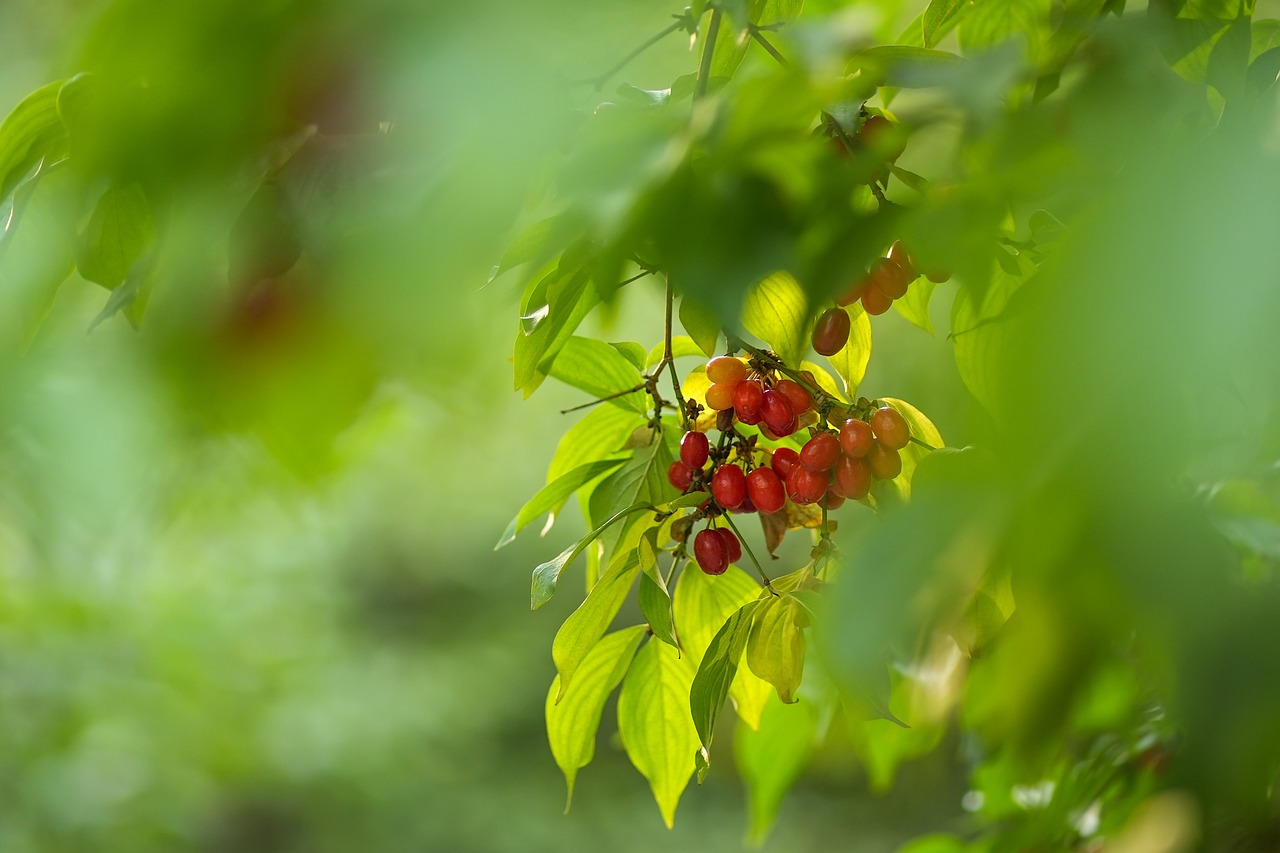
Building a Brand
Building a strong brand for your organic produce is not just about having a catchy logo or a snazzy website; it's about creating a connection with your customers. In today's market, consumers are increasingly seeking products that align with their values, especially when it comes to sustainability and health. So, how do you ensure your brand stands out in a sea of organic options? It starts with authenticity. Share your story—why did you choose to go organic? What challenges have you faced? This personal touch can resonate with potential buyers, making them feel like they are part of your journey.
Next, consider your target audience. Are they health-conscious families, gourmet chefs, or eco-friendly consumers? Understanding who you are selling to will help you tailor your messaging and marketing strategies effectively. For instance, if your primary customers are families, you might want to emphasize the health benefits of your fruits and how they can be incorporated into everyday meals. On the other hand, if you’re targeting chefs, focus on the unique flavors and quality of your produce.
Another crucial aspect of brand building is consistency. Your brand’s voice, visual identity, and messaging should be cohesive across all platforms, whether it's your website, social media, or packaging. This consistency not only helps reinforce your brand identity but also builds trust with your consumers. Consider creating a brand style guide that outlines your color schemes, fonts, and tone of voice. This can serve as a valuable reference as you develop marketing materials.
To further enhance your brand visibility, you can engage in various marketing strategies. Here are a few effective methods:
- Social Media Engagement: Utilize platforms like Instagram and Facebook to showcase your orchard, share recipes, and interact with your customers.
- Community Involvement: Participate in local events or sponsor community activities to build relationships and increase brand awareness.
- Educational Workshops: Host workshops or farm tours to educate consumers about organic farming practices and the benefits of your produce.
Finally, don't underestimate the power of feedback. Actively seek customer opinions and reviews, and be open to making changes based on their suggestions. This not only shows that you value their input but also helps you improve your offerings. Remember, building a brand is an ongoing process, and staying adaptable is key to long-term success.
Q: How can I effectively market my organic produce?
A: Focus on building a strong brand identity, engage with your audience through social media, and participate in local markets to showcase your products.
Q: What are some tips for creating a memorable brand story?
A: Share your journey into organic farming, highlight the challenges you’ve overcome, and connect emotionally with your audience to make your story relatable.
Q: Why is consistency important in branding?
A: Consistency builds trust and recognition among consumers, making it easier for them to remember and choose your products over competitors.
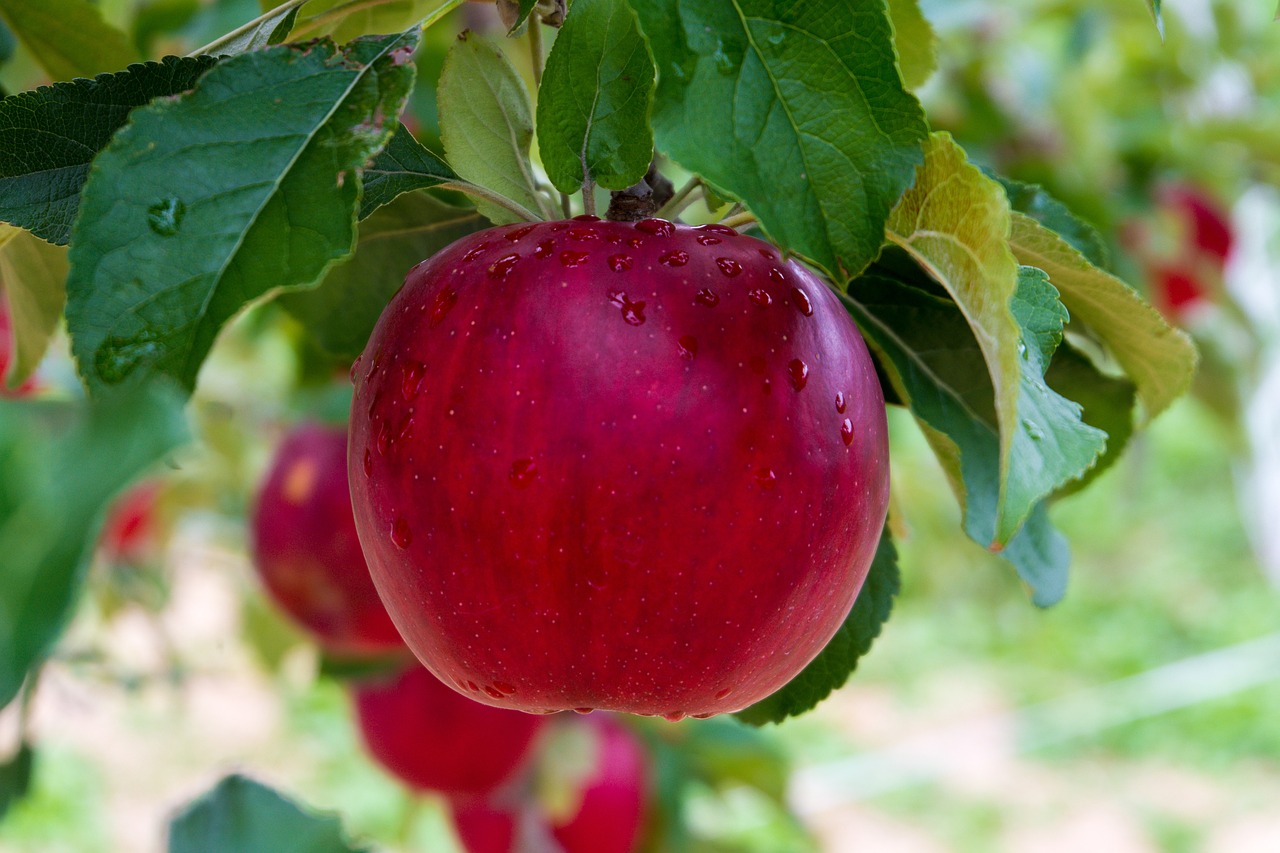
Utilizing Farmers' Markets
Farmers' markets are a vibrant and essential part of the local food movement, providing a direct link between producers and consumers. For organic orchardists, these markets offer a unique opportunity to showcase your produce, connect with your community, and build a loyal customer base. Imagine setting up your stall, surrounded by the vibrant colors and enticing aromas of freshly harvested fruits, while engaging with enthusiastic shoppers who appreciate the hard work that goes into organic farming. It’s not just about selling; it’s about sharing your passion for sustainable agriculture and educating consumers about the benefits of organic produce.
Participating in farmers' markets allows you to create a personal connection with your customers. You can share stories about your orchard, the sustainable practices you employ, and the journey of your fruits from tree to table. This interaction fosters trust and loyalty, making customers more likely to return for future purchases. Additionally, by offering samples of your fruits, you can entice potential buyers and showcase the quality of your harvest. After all, who can resist a juicy, organic peach on a warm summer day?
Moreover, farmers' markets provide valuable feedback that can help you improve your offerings. As you engage with customers, you’ll gain insights into their preferences and buying habits, which can inform your future planting and marketing strategies. You may discover that certain varieties are more popular than others, or that customers are looking for specific organic certifications. This feedback loop can be invaluable in refining your business model.
When considering participation in farmers' markets, it's essential to research and select the right markets that align with your target audience. Look for markets that prioritize organic produce and have a strong customer base that values sustainability. Additionally, consider the logistics of setting up your stall, including transportation, display options, and payment methods. Many markets now accept digital payments, which can streamline transactions and enhance customer experience.
To maximize your presence at farmers' markets, consider the following strategies:
- Branding: Create eye-catching signage and packaging that reflects your brand identity. Make sure your stall is visually appealing to attract customers.
- Engagement: Be personable and approachable. Engage with shoppers, answer their questions, and share your knowledge about organic farming.
- Seasonal Offerings: Highlight seasonal fruits and create special promotions to encourage purchases. This can keep your offerings fresh and exciting.
In summary, utilizing farmers' markets is an excellent way to market your organic produce. Not only do they provide a platform for direct sales, but they also allow for community engagement and valuable customer insights. By embracing this opportunity, you can cultivate a loyal customer base that appreciates the hard work and dedication you put into your organic orchard.
1. How do I find farmers' markets to participate in?
Research local farmers' markets through community boards, social media, or agricultural extension offices. Many regions have directories of farmers' markets that can help you identify the best ones for your produce.
2. What should I bring to a farmers' market?
Bring your fresh produce, signage, a table for display, bags for customers, and a method for accepting payments (cash, card reader, etc.). It's also helpful to have samples available for customers to taste.
3. How can I effectively market my stall at a farmers' market?
Create an inviting display, engage with customers, share your story, and offer samples. Utilizing social media to promote your presence at the market can also attract more visitors.
4. Are there any regulations I need to be aware of when selling at farmers' markets?
Yes, regulations can vary by location. Check with your local health department and market organizers for any necessary permits, licenses, or food safety requirements.
Frequently Asked Questions
- What is the best location for an organic orchard?
Choosing the right spot for your orchard is crucial! You want to look for a place that gets plenty of sunlight, has good drainage, and boasts quality soil. These factors can make or break your fruit trees' growth and productivity.
- How can I improve soil health for my orchard?
Healthy soil is the backbone of a thriving orchard. Regular soil testing is a great start; it helps you understand nutrient levels and pH balance. You can then use organic amendments like compost or manure to enrich the soil, which in turn boosts microbial activity and provides essential nutrients for your trees.
- What fruit varieties should I choose for my climate?
It's super important to select fruit varieties that thrive in your local climate. Each type of fruit has specific needs, so do your research! Consider factors like disease resistance and market demand to ensure your orchard is both productive and profitable.
- How can I manage pests organically?
Managing pests in an organic orchard doesn’t have to be a nightmare! Implementing integrated pest management (IPM) techniques can help. Encourage beneficial insects like ladybugs and lacewings to naturally control pest populations. You can also use organic methods like neem oil or insecticidal soaps for effective pest control.
- What are the benefits of drip irrigation?
Drip irrigation is a game changer! It delivers water directly to the roots of your trees, which reduces water waste and promotes deep root growth. This method is especially effective in maintaining soil moisture levels, ensuring your trees get the hydration they need without overdoing it.
- When should I prune my fruit trees?
Timing is everything when it comes to pruning! Each type of fruit tree has its own ideal pruning time. Pruning at the right moment not only encourages new growth but also improves fruit quality while minimizing stress on the trees.
- How do I know when to harvest my fruit?
Harvesting at the right time is key to enjoying optimal flavor and texture. Each fruit variety has specific signs of ripeness, so keep an eye out for those indicators. Trust me, picking your fruit at just the right moment makes all the difference!
- What are effective marketing strategies for organic produce?
Marketing your organic produce can be super rewarding! Start by building a strong brand identity that highlights your sustainable practices. Participating in farmers' markets is also a fantastic way to connect directly with consumers while showcasing your delicious fruits and veggies!



















